
- Privacy Policy
- Terms of Use
- Essay | Paragraph
- ArticleFeed

Essay on My Country Nepal | 700+ Words
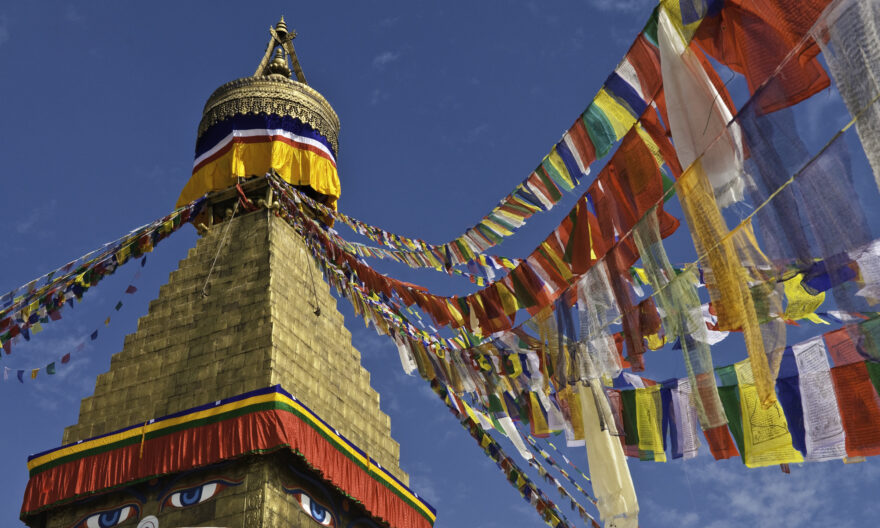
Essay on My Country Nepal | Paragraph Writing 600+ Words
My country is the land of diversity and is very unique. My country Nepal lies in the Southern part of Asia. It is surrounded by two powerful countries India and China and is landlocked. It has an area of about 147,516 sq. kilometers. Although small, my country is diverse both in terms of geography and culture. It is like a beautiful garden with many people from different backgrounds. It is a country with a variety of castes and cultures.
Nepal’s flag is also the most unique to the world. Our country’s flag stands out among the rest due to its shape. The colors and symbols of our flag also represent the country’s peace-loving and friendly nature, bravery, and immortal history.
In my country Nepal, we can find places with altitudes ranging from as low as 70 meters to the highest peak in the world 8848 meters. It is divided into 3 regions Terai, Pahad, and Himal with the temperature of the place varying from hot to cold. Each region has its own specialty. Nepal’s Himalayan regions have high and mighty mountain ranges that are breathtaking to look at. Out of the world’s top 10 highest peaks, 8 of them fall in my country Nepal.
For You: Essay on Importance of English Language
The Hilly region is full of green hills and a very cool temperature to live in. It has many historical and religious places. Terai too is mostly a flat stretch of land with fertile soil. It is the granary of Nepal where most crops are grown. It is also an industrial region of our country.
The flora and fauna of my country are also very diverse. The difference in altitudes makes our country have various ecosystems. Foreigners from all over the world pay thousands of dollars just to see our country’s reach of flora and fauna, rivers, lakes, cliffs, waterfalls, snowcapped mountains, and many other beautiful landscapes. The natural beauty of my country Nepal is difficult to find in other places.
Our country also has sites of great religious and historical importance where thousands of pilgrims visit every year. Places like Pashupatinath, Muktinath, Lumbini, Swyambunath, etc are very popular. It is already a pride to have come from such a country.
Essay on My Country Nepal
Our country also ranks in the top 5 for water resources. For such a small country to have rich water resources it is a boon. If fully utilized we can provide electricity to other countries too. Important personalities like King Janak, Gautam Buddha, Arniko, Bhrikuti were also born in Nepal. They all carry historical and religious importance even up to date. Our country’s warriors and commanders are still known today for their bravery and courage. It is also the reason our country never has to celebrate independence day as we never were colonized.
Nepal is also blessed with people of different backgrounds and ethnicity. In the past, many people had migrated to Nepal and settled here and hence the diversity. My country Nepal is also secular and respects all religions equally despite the numbers. There are 126 castes in Nepal and behind them, every culture has its significance. Each culture has its unique festivals and traditions. People also celebrate each other’s festivals with great fun. Nepali people are known for their hospitality and friendliness too.
But even after nature blessing our country, we have not been able to fully utilize it. Problems such as corruption and political instability run deep in the country. Our natural resources are not being taken care of properly and our country is being poor day by day. People are rich but the country is poor. Poverty is also seen in our country. Lack of proper management of wastes has also polluted our water and slowly destroying our forests. This also means our plants and animals are slowly being extinct. Illegal hunting and farming of precious animals and plants are also ruining our ecosystem.
This is why to save our country from further danger and poverty proper management and a responsible leader are required. The citizens of our country should also feel responsible for the country and not only blame the leaders. Proper plans and policies should be required to protect our resources. Social evils such as discrimination should also be tackled. Conservative-minded people should be given awareness and strict punishments for corruption and other illegal acts should be given. Employment opportunities should also be created as many people are leaving the country for jobs abroad.
Other Related Essays
- Essay on Guru Purnima
- Essay on Teej Festival
- Essay on Dashain Festival
- WishesinEnglish
- Birthday Wishes
- Hindi Wishes Shayari
- Nepali Wishes Shayari
- Write for us
- April Fools Day 2024
Essay on Nepal – My Country My Pride For Kids & Students Of Schools and Colleges
Nepal is amazingly beautiful. The unmatched beauty of the majestic Himalayas fills the visitors with great awe. Not only the natural beauty but the romantic, spiritual and omnipresent spirituality capture tourists and provide Nepal with a magical atmosphere that makes it a special and unique travel destination.

In this article, we will present some of the essays on Nepal for you and your friends. We’ll mention some popular facts, information, and attractive places in the Nepal essay. After reading this article you should have a clear idea about the essay about Nepal. Here are some of the top selected essays on Nepal.
Table of Contents
Essay about nepal: my country my pride [500 words].
Advertisement
My country Nepal is situated between two large countries China and India. According to the census of 2011 A.D., 26,494,504 people living in my country.
The area of Nepal is 147,181 SQ.K.M. the density of population in urban regions is higher than in rural regions. Similarly, valleys and plains are more densely populated than the hilly region.
The national flag of Nepal is unique to them all. It is the only flag in the world that is not rectangular. The flag is crimson red which signifies the rhododendron which is the national flower of Nepal. The border is blue which signifies peace and harmony.
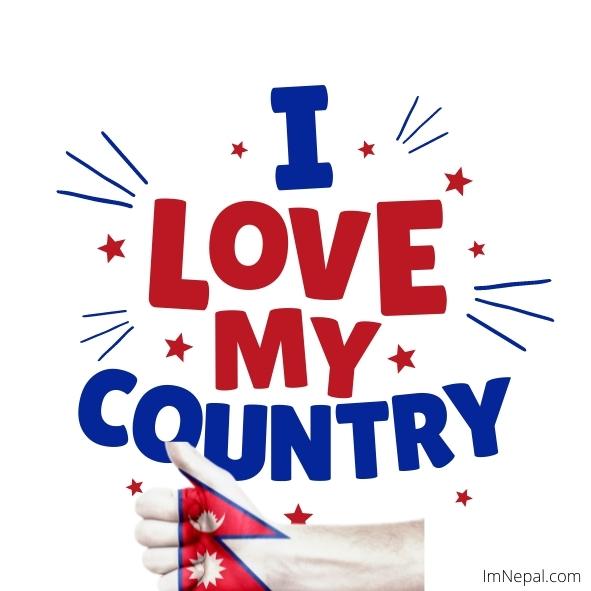
Until 1962, the flag’s emblems, the sun, and the crescent moon had human faces which signify the unity of the country. The national flower and bird, rhododendron and Danfe respectively, the flag was a plumed crown worn by the kings and crossed Kukhris carried by the Gurkhas for their bravery. Nepal followed a monarchy system until the people movement in 2063 BS.
Nepal is an agro-based country. About 80 percent of the people depend on agriculture. Some of the educated people are employed in other sectors such as teaching, office work, business, etc.
Although people belong to various social groups and religions, the real practice of ‘unity is diversity. Most of the people in Nepal followed the Hindu religion but people enjoy a right to other religions too.
People speak different languages and enjoy different modes of culture and traditions. In Nepal people respect each other’s religion and culture as well.
It is said that ‘Hario ban Nepal ko Dhan’. Nepal seems to be beautiful because of the green forest. In the forest, there are wild animals. Many tourists come to watch them which helps to increase the foreign currency.

Nepal is famous for its natural beauty and gifts. Although Nepal is landlocked, people from foreign countries are fond of visiting in Nepal. Nepal is famous for its mountains, rivers, lakes, etc.
The highest mountain peak in the world, Mt. Everest , lies in Nepal. Many tourists visit her every year. Through tourism, Nepal can earn foreign currency which can be used for development. Nepal is rich in water resources.
Many rivers flow from high mountains twisting and turning around the hills and moving through Terai. Many brooks and streams serve people in many ways. They are advantageous for irrigation, transportation, rafting, running hydroelectricity projects, and so on.
The most amazing fact about Nepal is that it does not greet another person with a handshake or a hello, it rather joins their hand and says Namaste which means I respect you as a person.
Nepal is the neighboring country of India, thus Indians do the same when they meet one another. Another amazing fact about Nepal is related to food. If you ever come to Nepal as a tourist, you must try the famous food called ‘ momo ’. It is a delicious dumpling made from flour and water filled with meat filling.
And how can we ever forget the birthplace of Lord Buddha? Lord Buddha was born in Lumbini in 500BC. It is a founder of the religion Buddhism which covers 9% of the total population.
He had four noble truths about pain and sorrow. Also, he had eight right paths about how to live a proper life. He is still regarded as the one who found peace and how the world then has become.
Nepal is developing a country. About 70 percent of the people are literate. The farmers are provided with the facilities of irrigation, modern fertilizers, improved seeds, and a modern method of farming. The facilities of electricity health care and other facilities are also increasing.
I feel proud to be a citizen of Nepal. We, Nepali people, respect each other. I do feel most of the people love the nation. We feel that mother and motherland are the same. I do hope that our country Nepal will be the most famous in the world.
This Essay on Nepal – My Nation My Pride is written by Susan Basel
Essay on Nepal – My Nation My Pride [1000 words]
My nation, Nepal, is extremely a heaven. The main imperfection is that it has no ocean to get to; it’s a landlocked nation. I adore my nation more than anything else on the planet.
What has my nation not got? It is one of the most extravagant nations on the planet in bio-assorted variety; hydropower or water assets; arrival structure and the amicable idea of individuals and their customs and culture.
My nation, Nepal has numerous activities and numerous things to see. Drifting, boating, mountaineering, paragliding, bouncing, and trekking are regular things to see, as well. Mountains, lakes, national parks , streams, and old structures are ladies’ viewing.
Even though an incredible number of the general population are under destitution line and uneducated; they are sufficiently cognizant to safeguard their traditions and societies.
They are politically mindful, as well. My nation’s present need is instructive and financial advancement, and vote-based standards and qualities. I cherish my nation.
I was conceived for it and I’ll bite the dust for it. In general, Nepal is such a land of mine where I can live cheerfully.
It is the guests ‘heaven where nature is alive. It is such s put a reality where its single touch revives everybody.
Nepal lies in the southern piece of Asia between China and India. It is a landlocked nation. It has a territory of 1,47,181 square km. The capital city is Kathmandu . Nepal can be partitioned into three natural zones.
The Himalayan districts, the Hilly area, and the Terai locale. The Himalayan locale covers 15% of the land region, the Hilly district has 68% and the Terai district has 17% of the land territory.
Nepal’s standard time is 5 hours and 45 minutes quicker than the Greenwich Mean Time (GMT), which is London time. Nepal is separated into 5 advancement locales, 14 zones, and 77 district areas. Nepal has almost 25 million of the populace.
Nepal is wealthy in regular assorted variety. It has numerous types of plants and creatures. Nepal is additionally reached in hydro control. It has numerous great waterways like Koshi, Gandaki, and Karnali.
Nepal is a heaven for vacationers. They can do numerous things like trekking, boating, and mountaineering.
In this way, enterprises in light of tourism ought to be built up here with the goal that each Nepali gets utilized. In addition, Nepal will turn into the goal of the voyagers.
Nepal is honored with one of the most extravagant societies on the planet. The announcement holds especially valid if there should arise an occurrence in Nepal where each part of life, sustenance, dress , and even occupations are socially guided.
The way of life of Nepal incorporates the codes of conduct, dress, dialect, customs, standards of conduct, and frameworks of conviction.
The way of life of Nepal is an exceptional blend of custom and curiosity. The conventions are taken after as they were and new traditions are made to keep pace with the evolving times. Culture in Nepal is a gathering of music, design, religion, and writing.
The mountain kingdom of Nepal is multi-ethnic and multi-lingual. The land is rich with special social gatherings like Tharu, Yadav, Ahir, Newars, and others.
Nepalese are among the most accommodating hosts. This is the explanation behind why travelers from distant locations abroad appreciate coming to Nepal over and over.
Nearby Nepalese are for the most part country individuals who welcome the visitors to their homes for tea, espresso, or dinner. Nepalese are socially warm, cordial, and tender hosts who put their hearts over their heads.

Party is the equivalent word in the Nepalese Culture. For the Nepalese, celebrations are not just the early scenes, but rather additionally are a living piece of their rich social legacy.
Celebrations viably tie together the Nepalese individuals of various social foundations and convictions into one country. Most Nepalese celebrations are identified with various Hindu and Buddhist divinities. They are commended on days sanctified for them by religion and convention
Nepal is regarded as a standout amongst the most extreme social orders on the planet. The declaration holds particularly substantial if there ought to emerge an event in Nepal where each piece of life, sustenance, dress, and even occupation are socially guided.
The lifestyle of Nepal consolidates the sets of accepted rules, dress, lingo, traditions, norms of direction, and structures of conviction.
Better than average to Know that the lifestyle of Nepal is a remarkable mix of custom and interest. The traditions are taken after as they were and new conventions are made to keep pace with the developing circumstances.
The gathering is the proportional word to the Nepalese Culture. For the Nepalese, festivals are not only yearly scenes but instead moreover are a living bit of their rich social heritage. Festivities suitably integrate the Nepalese people of different social establishments and feelings into one nation.
Most Nepalese festivals are related to different Hindu and Buddhist divinities. They are praised on days blessed for them by religion and tradition.
Tihar : This celebration of lights that falls between October/November is the second greatest celebration after Dashain . This celebration goes on for five days and individuals venerate Laxmi – the Goddess of Wealth.

Every one of the houses is cleaned and beautified with the conviction that Goddess Laxmi will go into the house that is the cleanest and individuals lit candles, oil lights, and different lights and the entire place looks enlightening.
Amid the five days, crows, canines, and bovines are revered and regarded with vermilion, wreath, and heavenly sustenance for what they have done in the lives of people.
Crows are viewed as the flag-bearers that brought news notwithstanding amid the circumstances when there were no postmen and no postal administrations. Pooches are the most devoted creatures and they protect our home as obvious gatekeepers.
Dairy animals are additionally an image of riches in Hinduism and she is likewise the rational creature of Nepal. Amid Tihar, the Newari people group in Nepal additionally watches Mha puja – a custom of loving one’s own body and life.
On this very day, the Newari New Year which is otherwise called Nepal Sambat starts. The celebration closes with Bhai Tika – siblings’ day when his sisters adore him for his long and sound life to shield the lives of his sisters. This is additionally a betting time in Nepal as betting isn’t unlawful during this celebration.
This Long Essay on Nepal, My Nation My Pride is written by Abhishek Raj Jha
Essay on Nepal MY COUNTRY MY PRIDE [1500 words]
Mother and country are more prominent than paradise. It is a genuine proclamation. We are born in this nation that is brimming with characteristic delights.
We are exceptionally nationalist. We adore the country more than our soul. Nation resembles a paradise for me. My nation’s name is Nepal. It is gotten from two supernatural words ‘Ne’ and ‘Pala’.
The word Nepal implies a nation of peace and love. This is where Master Gautama Buddha ‘ the light of Asia’ was born. This is a nation of Bir Gorkhalies. The most noteworthy crest on the planet Mt. Everest is situated in a nation that makes a nation the best.
There are numerous mountains in my nation along these lines it is called a precipitous nation. Numerous waterways spill out of the mountain to the slopes and plain place where there is Terai.
My nation Nepal is isolated into three geological districts and seven advancement areas called provinces. Nation national bloom is the rhododendron, the national fowl is Daphne, the national color is a smirk and the national weapon is khukuri.
My nation Nepal is little on the planet outline, but for me, my nation whether it is little or enormous is a world. Numerous national identities are born in nation life: Prithivi Narayan Shah, Bahadur Shah, Rajendra Laxmi, etc. The history of the nation Nepal is great.
Every one of the pages of history is loaded with the hot and red blood of national legends. My nation Nepal is the Yam between two major stones. I mean it is between the two greatest nations India and China. Nation Nepal is separated into numerous ethnic gatherings.
The nation is multi-rank, multi-culture, multi-convention, and multi-religious. They are of various positions yet they are living in ‘solidarity of assorted variety’ without battling for the sake of culture, religion, rank, and so forth. They are living in a tranquil condition.
People of diverse religions and beliefs are the dominant features of my country’s society. Hinduism, Buddhism, Islam, and Christianity are the major religions that are practiced in my country.
People have a sense of unity, though living in diversity. Mostly, Brahmins and Chhetris are regarded as Hindu believers and people from the Mongoloid community are taken as Buddhist devotees, but they have good respect for each other in the course of cultural exchange.
A Hindu has a distinct tradition of sacrificing animals to the goddess because they are the symbol of having ferocious power and need the blood of a living being to be satisfied. Lord Shiva is considered to be the supreme God in Hinduism.
The way of life in my country is a collection of music, engineering, religion, and writing. Our mountain kingdom is multi-ethnic and multi-lingual. The land is rich with interesting social gatherings like Tharu, Yadav, Ahir, Newars, and others.
Culture is inserted in the high pinnacles of our country, convention streams with its waterways, workmanship crosses through its valleys and religion lies in the core of its kin. Our country is a place where craftsmanship, culture, and religion are a piece of the life of the occupants. Individuals praise each minute with the smell, adding curiosity to the customs without influencing their quintessence.
Further, the craftsmanship and engineering of my country are profoundly impacted by religion. Exceptional craftsmanship can be found in sanctuaries, engineering, sanctums, wellsprings, and the outline of religious articles.
Craftsmanship and religion are so profoundly interlocked that it is difficult to isolate one from the other. All artistic expressions express both Hindu and Buddhist iconography.
Along the line of culture, we Nepalese have our unique way of celebrating festivals, It is a blend of multilingual and multicultural measurement.
More than 60 ethnic gatherings have been recorded and numerous are as yet investigated, who are prosperous with their dialect, ensembles, and conventions.
They have their remarkable celebrations of festivity. In my country, individuals praise national celebrations and nearby reasonable for the entire year in various months.
MagheSakranti is praised in January, on the principal day of Magh as indicated by the Nepali timetable. Individuals eat different dishes of heavenly nourishment such as ghee, laddoo and Chaku, and sweet potatoes. Hitched little girls go to their folks to join the joy.
Fagupurnima is a beautiful celebration, celebrated amid the long stretch of March on a full moon day. Individuals praise this celebration by tossing hues and water to each other. It is flawlessly celebrated in the Terai areas of Nepal.
MahaShivratri festivity is devoted to Lord Shiva, celebrated on the no-moon night by the Hindus by and large in March. A major reasonable held in the Pashupatinath territory by a huge number of Hindu aficionados. Sadhus paint their bodies with the fiery debris and love Shiva all through the entire night.
Ghodejatra is otherwise called a pony race festivity, for the most part, celebrated toward the finish of March (15 Chaitra). It is a breathtaking festival at Tundikhel by amassing the ponies of police and armed force. Ordinarily, the visitors are the senior government authorities and high personnel.
Gai Jatra is held in August, particularly celebrated inside the Kathmandu Valley. The members are from those families who have lost they’re any of their relatives or closest ones.
It was begun by King Pratap Malla to support his significant other, who was especially stunned by the passing of a child. It demonstrated that it isn’t just an illustrious family who lost their dearest one yet, in addition, to numerous families.
The Indra Jatra is praised to pay tribute to the lord of rain Indra, in August for eight days. It is commended by a mass of individuals pulling the chariot.
Buddha Jayanti is the festival of Lord Buddha’s birthday. Buddhist and Hindu fans walk rallies and visit Buddhist Stupas and attempt to spread the message of peace on the planet.
Losar is Tibetan New Year. Individuals commend it for a few days on singing, moving, and eating delectable substances. Tibetans accumulate around the Stupa with their outfits.
Chhath is a festival by venerating the rising and setting sun by sinking half of the body in the water. For the most part, it is commended in the Terai area by wedded ladies. They remain to fast amid the celebration and sing people melodies.
Teej is a celebration celebrated by Hindu ladies for three days. It regularly falls in August or early September. This celebration is commended to wish the long existence of the spouse.
Dashain is the longest celebration in Nepal, praised for15 days. It falls between September-October. The Hindu individuals adore goddess Durga for nine days and put on Tika and Jamara on the tenth day till the fifteenth day alongside the gift of the senior citizens.
Deepawali is known as the Tihar celebration celebrated for five days amid harvest time. It is the celebration of lights. On the fifth day, sisters put tika and wreaths on their siblings and sibling offered some sort of presents. It is known as the celebration, making a great connection between siblings and sisters.
Along the line of these festivals, the mood, beats, and bob of Nepali conventional people, and established music are sufficiently otherworldly to soothe you and sufficiently engaging to cheer you.
Music is related to each occasion in Nepal, at that point be it birth, marriage, celebrations, or national occasions. You will be surprised to find a piece of various unique music full of rhythm in every culture that is sufficient enough to blow your mind and demand the music for a long time.
If one moves away from our rich culture and diversity within it, if one can take one’s eye away from these, one will be surprised by the natural beauty my country possesses.
With top eight in the top ten 8000-meter high mountains in the world in its lap, my country shines every morning to make people over here smile with it.
Apart from these White Mountains, green mountains are all over the mountain region to make one sparkle within yourself with its astonishing beauty.
Within these green mountains, we have a large landscape of forest where one will be able to find the scenario of 500 various types of butterflies and 600 types of the indigenous plant family.
My country, Nepal is an overall package of beauty, diversity, history, and on top of that unity among people. I am certainly proud to be a part of this beautiful creation.
This Short Essay on Nepal, My Nation My Pride is well written by Hari Adhikari.
Essay on Nepal – Our country, our pride [200 words]
There is a widely famous statement that “Mother and motherland are greater than heaven.” This quote is so true without any doubt. We are born in a country that is filled with natural beauty.
The feeling of patriotism flows in the blood of every Nepalese citizen. We love the nation more than our soul. Our country is like heaven for us. Our country’s name is Nepal.
The word Nepal signifies a country of peace and love. Nepal is a country where Lord Gautam Buddha also known as the ‘light of Asia’ was born. Nepal is a country of Bir Gorkhali soldiers. The highest peak in the world i.e. Mt. Everest is located in our country Nepal.
There are various mountains in our country therefore Nepal is also globally known as a mountainous country. Our country Nepal is divided into three geographical regions and five development regions.
The national flower of Nepal is the rhododendron, the national bird is Daphne, the national color is the smirk and the national weapon is khukuri. Our country Nepal is very small on the world map but for us, whether it is small or big it is the world.
Nepalese can see the whole world in their homeland. Many national personalities are born in our country. For instance Prithvi Narayan Shah, Bahadur Shah, Rajendra Laxmi, and so on.
The history of the country Nepal is very powerful. All the pages of the past are crammed with hot as well as pure dark red blood of our national heroes. Our country Nepal is the Yam between two big stones.
This means Nepal lies in the middle of two leading countries i.e. India and China. Country Nepal is divided into many ethnic groups. The country is multi-caste, multi-culture, multi-tradition, and multi-religious.
Nepalese are living in a very peaceful environment. Nepal is loved by many tourists numbers of tourists is increasing day by day. Tourists are attracted by countries by which country can move ahead in their economic status.
Foreign currency which tourists left in the country helps to make the country more developed. We, Nepalese people, do not need big buildings, expensive things, etc. We are happy by the smell of rhododendron.
We are happy with the natural beauties which are located in the country. We all are well known for the saying, “Hario ban Nepal ko Dhan”. It is true as every green forest in Nepal is wealth for our country.
More than 80% of the total population of the whole country depends upon agriculture therefore country can be said as an agricultural country also. Many rivers, green forests, mountains, lakes, etc. make the country at the top.
Our country Nepal is heaven for us. Our country which is full of natural beauty is everything for me that I want. We all Nepalese are ready to sacrifice souls to our country Nepal. We feel very proud to be Nepali. Thus, we say that our country is a pride for us. We feel proud to say that we are Nepali.
By Saugat Thapa
Essay on Nepal – My Country My Pride (Essay in 300 words)
Nepal is known for its natural beauty in the world. There is no sea linked with this country but yet people like to see mountains, hills, forests, rivers, lakes and so many other things. Everyone knows Nepal as the country with the highest mountain in the world.
This is the only country where people have found innumerable kinds of birds which live in high mountains as well as in low Terai. Most people enjoyed mountain climbing, trekking, rafting in the rivers and lakes, and having a wonderful view of wild animals.
Mountains speak their beauty, golden view in the morning, the sun playing in those regions. Bright red light can be observed in the west on the horizon at the sunset. Probably the sun looks playing with young people of the land.
Rivers flow from the high mountains twisting and turning around the hills and through the Terai and reaching the other’s land. The murmuring brooks (rivers) refresh the human heart and mind. Sals, pines, and other trees where rhododendrons smile in full bloom. Leaves and branches move in the gentle breeze.
Lophophorus sing beautiful songs in higher flights. Lovely flowers bloom and. smile in rainbow colors. The cuckoo is seen sitting on branches and calling the spring with rapturous songs. Mechi, Koshi, and Karnali run far in distance carrying calls from Nepalese people for foreigners.
Mechi is in the east. Kali in the west making borders of the country. Mountains in the north and Terai in the south join with neighboring countries. Southern plain lands speak their own words. Green crops and harvest produce their delights. During the plow, planting, and harvesting one can enjoy the songs sung by the farmers.
Temples and pagodas ring the bells and gongs (large bells) to invite the foreigners. Wild animals living in the dense forest make a beautiful show for the people. Who will miss the beauties of Nepal? Who’ll not have the desire to see once the real beauty of Nature?
There are many websites where you can order to write an essay. Feel free to visit this website where you can get a custom essay and someone will write your essay about Nepal from scratch. CustomWritingPro is a good solution for students who need help writing essays online.
Searched Terms
Essay on Nepal, Short Essay on Nepal, Long Essay on Nepal, Paragram and Essay on Nepal, Essay+on+Nepal, Nepal+essay, top Essay on Nepal, etc.
Related Posts
The best places in china for families.

Top 5 Places To Visit in Montenegro

Ways To Improve Your Traveling Experience Through A Credit Card

21 Interesting Tips for Tourists Who Want to Visit Nepal During Summer Season

The Modern Traveler’s Guide to Ancient Wonders

Five Popular Trekking Routes in the Everest Region

Recent Posts
- How to Download OnlyFans Purchased Video | Ultimate Guide 2024
- Winning Against the Odds: Real Stories of Big Wins in Online Slots
- Happy Nepali New Year 2081: Quotes and Images to Inspire a Fresh Start
- Love In Every Frame: Nepali Couple’s Lovely Romantic Moment in the Bedroom (23 Images)
- Welcoming Prosperity: Nepali Beautiful Girls with Happy New Year 2081 Greeting Cards (65 Images)

- Privacy Policy
© 2023 Wishes, Messages, Travel, Lifestyle, Tips in English, Hindi and Nepali Mount Everest. Legal Support by Quotes .
- Travel, Information And Lifestyle Blog For Nepal & Nepalese People
- Reveel Protocol Potential Airdrop Backed by Binance
- KiloEX Confirmed Airdrop Invested By Binance Labs
- Chance of Getting Two Potential Airdrop | Backed by Polychain, BinanceLabs and Others
- Caldera Potential Airdrop Invested $9M By Sequoia Capital And Dragonfly
- Polyhedra Network Potential Airdrop biggest Investors are Binance Labs, Animoca Brand, Polychain
Greetinglines
Best Greetings For Loved Ones
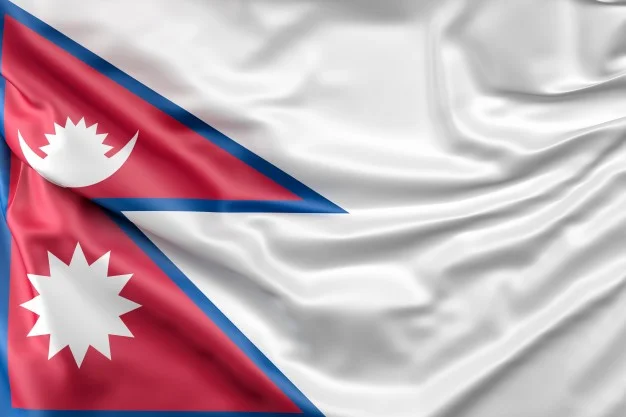
Essay on My Country Nepal For Students
If there is a country’s flag that stands out among all other countries it is the flag of Nepal . Our flag is very unique and cannot be compared to other countries’ flags due to its shape. It also has a hidden meaning behind it which represents the country’s peace-loving and friendly nature, bravery, and immortal history.
My country Nepal is situated between two countries, India and China. Although it is sandwiched between international powers, conflicts have not happened between any, and peace remains. Nepal is a country of various castes and cultures. In other words, it is like a beautiful garden of flowers with people of different ethnicities and backgrounds.
My country Nepal is not only unique for its flag but also its geographical terrain, the variety of castes and cultures you can find, and the rich history of it. It is the land of various great places and important figures that people know far and wide. The temperature here spans from cool to hot and is a heaven for residing in.
There are about 126 castes in Nepal each with its own rich history and culture which makes Nepal a rich place for culture. Some dating back to the millenniums. Not only that, our country is very rich in its geographical terrain. From the lowest point of just 70 Meters from sea level to the world’s highest peak Mt. Everest (8848.86 meters) , we have temperature scales that vary from place to place. It is divided into three regions, Terai, Hilly, and Himalayas each according to their altitude and geographical differences.
Himalayan regions have high and mighty Himalayas that are breathtaking to look at. Out of the world’s top 10 highest peaks, 8 of them fall in my country. It is already a great pride to have come from such a country. The diverse flora and fauna, beautiful landscapes, lush and green jungles, historical and religious places in Nepal are enough to gather the attention of foreigners and locals too. People from all over the world pay thousands of dollars just to see our country’s snow-capped mountains, rivers, cliffs, waterfalls, other beautiful landscapes, the rich flora and fauna, and sites of great religious and historical importance. It just doesn’t end there.
📌 Read – Essay on the Importance of English Language
Our country ranks in the top 5 for the richest in water resources. With just a small country with an area of 1,47,181 sq kilometers, it has the potential to fuel hydropower worth 2% of the entire world. It may look small in number but taking our country’s small area in context, it is a potential incomparable to all. The Terai region holds fertile land and smooth flowing waters that are excellent for farming and cultivating.
Nepal is also known as an agricultural country where 60% of the people here follow agriculture as their work. Our country also has huge historical importance. Gautama Buddha the founder and preacher of Buddhism which is practiced worldwide was also born in Nepal. Buddhism is known to preach peace and non-violence and to love everyone. King Janak is also an important figure who holds great importance to communities in Nepal.
Other personalities include Bhrikuti, Araniko, etc. Our country is also known for its bravery. Our country never has to celebrate Independence day as we were never under the rule of any other. We stood and fought against the Britans and other Mongol countries. Brave Gorkhalis were united after a long struggle and fought their way to preserve their country. The courage and bravery of Nepali people are also know world wide. Many brave Gorkhalis went to fight under countries in world wars and won various colors and medals. This brought our country so much respect that we even enjoy it for granted to date.
Although our country’s history, culture, terrains, and achievements make anyone feel proud, the power struggle for the politicians, previous kings, and presidents have made the country weak and fall in the developing country category. Our rich natural resources have not been utilized and we have fallen way behind. Corruption is widely prevalent in our country and the loans we have taken from other countries are in a large number. The amount of food and other materialistic consumption has made Nepal import more and export less.
Our country is poor but the people here are rich. This is because of the corruption and the illegal working/trading that has been done. The government has not made significant progress and the people aren’t responsible. Although I feel proud to be A Nepali, the condition of my country makes me feel bad. People should feel responsible and carry out their duties and not just complain about the government.
The government too should implement proper policies and rules and enforce them accordingly. Utilization of our natural resources should be done in an effective way and social evils such as discrimination according to castes and genders, other superstitions should be slowly removed. Centralized development should stop and we should control the people moving out to other countries with their skills that are wasted abroad. This way we can slowly develop our country.
Essays on Other Topics
- Essay on Mother – 800+ Words Paragraph
- Essay on Pollution | 800+ Words Paragraph on Pollution
- Essay on Importance of Discipline
- Essay on Globalization | 800+ Words Paragraph on Globalization
If you love our posts the consider following us on our social media channels Twitter @ GreetingLines and Facebook @ GreetingLines , our you can directly reach us via Contact Page .

You May Also Like

Essay on Romeo and Juliet | Paragraph on Romeo & Juliet

Is It Bad That Students Use Online Essay Writing Services?

Essay on Technology | 800+ Words Paragraph on Technology
28 thoughts on “ essay on my country nepal for students ”.
Thank you so much sir for helpful essay.
Thanks a lot sir .😊👨 its give to get new ideas😊
It’s my humble request to you.that plz write an essay on my country,my paradise.🙏
Thankyou for your essay. It really helped me.
Thank you so much sir for helpful essay.Actually I was searching for essay on my country and luckily found ….
░░░░░░▄████▄ ░░░░░▐▌░░░░▐▌ ░░▄▀▀█▀░░░░▐▌ ░░▄░▐▄░░░░░▐▌▀▀▄ ▐▀░▄▄░▀▌░▄▀▀░▀▄░▀ ▐░▀██▀░▌▐░▄██▄░▌ ░▀▄░▄▄▀░▐░░▀▀░░▌ ░░░░█░░░░▀▄▄░▄▀ ░░░░█░█░░░░█░▐ ░░░░█░█░░░▐▌░█ ░░░░█░█░░░▐▌░█ ░░░░▐▌▐▌░░░█░█ ░░░░▐▌░█▄░▐▌░█ ░░░░░█░░▀▀▀░░▐▌ ░░░░░▐▌░░░░░░█ ░░░░░░█▄░░░░▄█ ░░░░░░░▀████▀
░░░░░░▄████▄ ░░░░░▐▌░░░░▐▌ ░░▄▀▀█▀░░░░▐▌ ░░▄░▐▄░░░░░▐▌▀▀▄ ▐▀░▄▄░▀▌░▄▀▀░▀▄░▀ -: ▐░▀██▀░▌▐░▄██▄░▌ ░▀▄░▄▄▀░▐░░▀▀░░▌ ░░░░█░░░░▀▄▄░▄▀ ░░░░█░█░░░░█░▐ ░░░░█░█░░░▐▌░█ ░░░░█░█░░░▐▌░█ ░░░░▐▌▐▌░░░█░█ ░░░░▐▌░█▄░▐▌░█ ░░░░░█░░▀▀▀░░▐▌ ░░░░░▐▌░░░░░░█ ░░░░░░█▄░░░░▄█ ░░░░░░░▀████▀
You are great sir 😚✌️🤞🙏
I really like your essay it helps me to get new ideas and thoughts 😃💕💕💕💕 Thanks for your nice essay.
Thank for your kind words we appreciate it 😉
Hi I am new user
Thank you Alot sir ❤
Your Welcome 😉
Thank yuh sir. For the great essay. This helps us for getting ideas to write an essay
Thank you so much for such amazing compliment 😊
Am proud to be nepali ❤️❤️❤️🇳🇵🇳🇵🇳🇵🇳🇵 so I knew about the history of our country it’s like a story ❤️❤️🇳🇵🇳🇵🇳🇵
Ya it’s really good to visit in Nepal. Nepal has most beautiful place to look.
Thanku sir for such a helpful and true essay which is outstanding💕💕💕
Thanku sir for your such a helpful and true essay which is outstanding💕💕💕
we are glad that you liked it 😉
Hello there! This post couldn’t be written any better!
Reading this post reminds me of my old room mate! He always kept chatting about this. I will forward this article to him. Fairly certain he will have a good read. Thanks for sharing!
I love what you guys are up too. This kind of clever work and exposure! Keep up the superb works guys I’ve incorporated you guys to my blogroll.
Wonderful blog! I found it while searching on Yahoo News. Do you have any tips on how to get listed in Yahoo News? I’ve been trying for a while but I never seem to get there! Thank you
Hey There. I found your blog using msn. This is a very well written article. I will be sure to bookmark it and return to read more of your useful info.
Thanks for the post. I will certainly return.
Hello! Do you know if they make any plugins to help with Search Engine Optimization? I’m trying to get my blog to rank for some targeted keywords but I’m not seeing very good results. If you know of any please share. Many thanks!
You can Use rank math or Yoast SEO they are very good you can try both but I would suggest you to use Rankmath cause it is more user friendly but in the end, it depends on you;)
This colours has navigated right into my heart.
This post is so insightful and well-written! I love how you presented the information in a clear and engaging manner. Keep up the great work
Leave a Reply Cancel reply
Your email address will not be published. Required fields are marked *
Save my name, email, and website in this browser for the next time I comment.
- Countries and Their Cultures
- Culture of Nepal
Culture Name
Alternative name, orientation.
Identification. Nepal is named for the Kathmandu Valley, where the nation's founder established a capital in the late eighteenth century. Nepali culture represents a fusion of Indo-Aryan and Tibeto-Mongolian influences, the result of a long history of migration, conquest, and trade.
Location and Geography. Nepal is a roughly rectangular country with an area of 147,181 square miles (381,200 square kilometers). To the south, west, and east it is bordered by Indian states; to the north lies Tibet. Nepal is home to the Himalayan Mountains, including Mount Everest. From the summit of Everest, the topography plunges to just above sea level at the Gangetic Plain on the southern border. This drop divides the country into three horizontal zones: the high mountains, the lush central hills, and the flat, arid Terai region in the south. Fast-moving, snow-fed rivers cut through the hills and mountains from north to south, carving deep valleys and steep ridges. The rugged topography has created numerous ecological niches to which different ethnic groups have adapted. Although trade has brought distinct ethnic groups into contact, the geography has created diversity in language and subsistence practices. The result is a country with over thirty-six ethnic groups and over fifty languages.
Demography. The population in 1997 was just over 22.6 million. Although infant mortality rates are extremely high, fertility rates are higher. High birth rates in rural areas have led to land shortages, forcing immigration to the Terai, where farmland is more plentiful, and to urban areas, where jobs are available. Migration into cities has led to over-crowding and pollution. The Kathmandu Valley has a population of approximately 700,000.
Linguistic Affiliation. After conquering much of the territory that constitutes modern Nepal, King Prithvi Narayan Shah (1743–1775) established Gorkhali (Nepali) as the national language. Nepali is an Indo-European language derived from Sanskrit with which it shares and most residents speak at least some Nepali, which is the medium of government, education, and most radio and television broadcasts. For many people Nepali is secondary to the language of their ethnic group or region. This situation puts certain groups at a disadvantage in terms of education and civil service positions. Since the institution of a multiparty democracy in 1990, linguistic issues have emerged as hotly debated topics.
Symbolism. The culture has many symbols from Hindu and Buddhist sources. Auspicious signs, including the ancient Hindu swastika and Shiva's trident, decorate buses, trucks, and walls. Other significant symbols are the emblems (tree, plow, sun) used to designate political parties.
Prominent among symbols for the nation as a whole are the national flower and bird, the rhododendron and danfe; the flag; the plumed crown worn by the kings; and the crossed kukhris (curved knives) of the Gurkhas, mercenary regiments that have fought for the British Army in a number of wars. Images of the current monarch and the royal family are displayed in many homes and places of business. In nationalistic rhetoric the metaphor of a garden with many different kinds of flowers is used to symbolize national unity amid cultural diversity.
History and Ethnic Relations
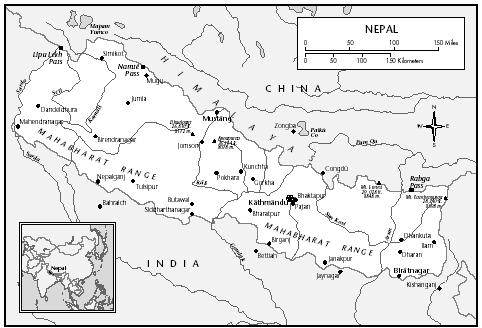
The birth of the nation is dated to Prithvi Narayan Shah's conquest of the Kathmandu Valley kingdoms in 1768. The expansionist reigns of Shah and his successors carved out a territory twice the size of modern Nepal. However, territorial clashes with the Chinese in the late eighteenth century and the British in the early nineteenth century pushed the borders back to their current configuration.
National Identity. To unify a geographically and culturally divided land, Shah perpetuated the culture and language of high-caste Hindus and instituted a social hierarchy in which non-Hindus as well as Hindus were ranked according to caste-based principles. Caste laws were further articulated in the National Code of 1854.
By privileging the language and culture of high-caste Hindus, the state has marginalized non-Hindu and low-caste groups. Resentment in recent years has led to the organization of ethnopolitical parties, agitation for minority rights, and talk about the formation of a separate state for Mongolian ethnic groups.
Despite ethnic unrest, Nepalis have a strong sense of national identity and pride. Sacred Hindu and Buddhist sites and the spectacular mountains draw tourists and pilgrims and give citizens a sense of importance in the world. Other natural resources, such as rivers and flora and fauna are a source of national pride.
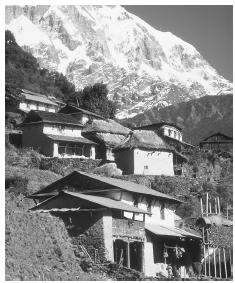
Hindu castes and Buddhist and animist ethnic groups were historically collapsed into a single caste hierarchy. At the top are high-caste Hindus. Below them are alcohol-drinking ( matwali ) castes, which include Mongolian ethnic groups. At the bottom are untouchable Hindu castes that have traditionally performed occupations considered defiling by higher castes. The Newars of the Kathmandu Valley have a caste system that has been absorbed into the national caste hierarchy.
Historically, members of the highest castes have owned the majority of land and enjoyed the greatest political and economic privileges. Members of lower castes have been excluded from political representation and economic opportunities. The untouchable castes were not permitted to own land, and their civil liberties were circumscribed by law. Caste discrimination is officially illegal but has not disappeared. In 1991, 80 percent of positions in the civil service, army, and police were occupied by members of the two highest castes.
Urbanism, Architecture, and the Use of Space
Nepal historically was one of the least urbanized countries in the world, but urbanization is accelerating, especially in the capital, and urban sprawl and pollution have become serious problems. Kathmandu and the neighboring cities of Patan and Bhaktapur are known for pagoda-style and shikhara temples, Buddhist stupas, palaces, and multistory brick houses with elaborately carved wooden door frames and screened windows. Although the largest and most famous buildings are well maintained, many smaller temples and older residential buildings are falling into disrepair.
At the height of British rule in India, the Rana rulers incorporated Western architectural styles into palaces and public buildings. Rana palaces convey a sense of grandeur and clear separation from the peasantry. The current king's palace's scale and fortress-like quality illustrate the distance between king and commoner.
Rural architecture is generally very simple, reflecting the building styles of different caste and ethnic groups, the materials available, and the climate. Rural houses generally have one or two stories and are made of mud brick with a thatched roof. Village houses tend to be clustered in river valleys or along ridge tops.
Food and Economy
Food in Daily Life. Many Nepalis do not feel that they have eaten a real meal unless it has included a sizable helping of rice. Most residents eat a large rice meal twice a day, usually at midmorning and in the early evening. Rice generally is served with dal, a lentil dish, and tarkari, a cooked vegetable. Often, the meal includes a pickle achar, made of a fruit or vegetable. In poorer and higher-altitude areas, where rice is scarce, the staple is dhiro, a thick mush made of corn or millet. In areas where wheat is plentiful, rice may be supplemented by flat bread, roti. Most families eat from individual plates while seated on the floor. Though some urbanites use Western utensils, it is more common to eat with the hands.
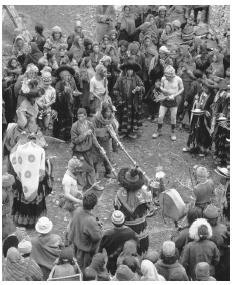
Conventions regarding eating and drinking are tied to caste. Orthodox high-caste Hindus are strictly vegetarian and do not drink alcohol. Other castes may drink alcohol and eat pork and even beef. Traditionally, caste rules also dictate who may eat with or accept food from whom. Members of the higher castes were particularly reluctant to eat food prepared by strangers. Consequently, eating out has not been a major part of the culture. However, caste rules are relaxing to suit the modern world, and the tourist economy is making restaurants a common feature of urban life.
Food Customs at Ceremonial Occasions. At weddings and other important life-cycle events, feasts are generally hosted by the families directly involved, and numerous guests are invited. At such occasions, it is customary to seat guests on woven grass mats on the ground outside one's home, often in lines separating castes and honoring people of high status. Food is served on leaf plates, which can be easily disposed of. These customs, however, like most others, vary by caste-ethnic groups, and are changing rapidly to suit modern tastes.
Basic Economy. The large majority of the people are subsistence farmers who grow rice, maize, millet, barley, wheat, and vegetables. At low altitudes, agriculture is the principal means of subsistence, while at higher altitudes agropastoralism prevails. Many households maintain chickens and goats. However, few families own more than a small number of cows, water buffalo, or yaks because the mountainous topography does not provide grazing land for large animals.
Nepal is one of the poorest countries in the world. This poverty can be attributed to scarce natural resources, a difficult terrain, landlocked geography, and a weak infrastructure but also to feudal land tenure systems, government corruption, and the ineffectiveness of development efforts. Foreign aid rarely goes to the neediest sectors of the population but is concentrate in urban areas, providing jobs for the urban middle class. The name of the national currency is rupee.
Land Tenure and Property. Historically, a handful of landlords held most agricultural land. Civil servants often were paid in land grants, governing their land on an absentee basis and collecting taxes from tenant-farming peasants. Since the 1950s, efforts have been made to protect the rights of tenants, but without the redistribution of land.
Overpopulation has exacerbated land shortages. Nearly every acre of arable land has been farmed intensively. Deforestation for wood and animal fodder has created serious erosion.
Commercial Activities. The majority of commercial activity takes place at small, family-owned shops or in the stalls of sidewalk vendors. With the exception of locally grown fruits and vegetables, many products are imported from India and, to a lesser extent, China and the West. Jute, sugar, cigarettes, beer, matches, shoes, chemicals, cement, and bricks are produced locally. Carpet and garment manufacturing has increased significantly, providing foreign exchange. Since the late 1950s, tourism has increased rapidly; trekking, mountaineering, white-water rafting, and canoeing have drawn tourists from the West and other parts of Asia. The tourism industry has sparked the commercial production of crafts and souvenirs and created a number of service positions, such as trekking guides and porters. Tourism also has fueled the black market, where drugs are sold and foreign currency is exchanged.
Major Industries. There was no industrial development until the middle of the twentieth century. Much of earliest industrial development was accomplished with the help of private entrepreneurs from India and foreign aid from the Soviet Union, China, and the West. Early development focused on the use of jute, sugar, and tea; modern industries include the manufacturing of brick, tile, and construction materials; paper making; grain processing; vegetable oil extraction; sugar refining; and the brewing of beer.
Trade. Nepal is heavily dependent on trade from India and China. The large majority of imported goods pass through India. Transportation of goods is limited by the terrain. Although roads connect many major commercial centers, in much of the country goods are transported by porters and pack animals. The few roads are difficult to maintain and subject to landslides and flooding. Railroads in the southern flatlands connect many Terai cities to commercial centers in India but do not extend into the hills. Nepal's export goods include carpets, clothing, leather goods, jute, and grain. Tourism is another primary export commodity. Imports include gold, machinery and equipment, petroleum products, and fertilizers.
Division of Labor. Historically, caste was loosely correlated with occupational specialization. Tailors, smiths, and cobblers were the lowest, untouchable castes, and priests and warriors were the two highest Hindu castes. However, the large majority of people are farmers, an occupation that is not caste-specific.
Social Stratification
Classes and Castes. Historically, caste and class status paralleled each other, with the highest castes having the most land, capital, and political influence. The lowest castes could not own property or receive an education. Although caste distinctions are no longer supported by law, caste relations have shaped present-day social stratification: Untouchables continue to be the poorest sector of society, while the upper castes tend to be wealthy and politically dominant. While land is still the principal measure of wealth, some castes that specialize in trade and commerce have fared better under modern capitalism than have landowning castes. Changes in the economic and political system have opened some opportunities for members of historically disadvantaged castes.
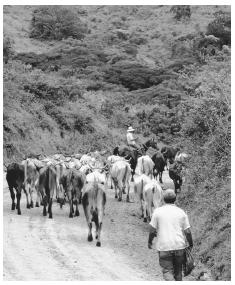
Political Life
Government. The Shah dynasty has ruled the country since its unification, except during the Rana period from the mid-nineteenth to the mid-twentieth century. During the Rana administration, the Shah monarchs were stripped of power and the country was ruled by a series of prime ministers from the Rana noble family. In 1950, the Shah kings were restored to the throne and a constitutional monarchy was established that eventually took the form of the panchayat system. Under this system, political parties were illegal and the country was governed by local and national assemblies controlled by the palace. In 1990, the Movement for the Restoration of Democracy (People's Movement) initiated a series of popular demonstrations for democratic reforms, eventually forcing the king to abolish the panchayat system and institute a multiparty democracy.
The country is divided administratively into fourteen zones and seventy-five districts. Local and district-level administers answer to national ministries that are guided by policies set by a bicameral legislature made up of a House of Representatives and a National Council. The majority party in the House of Representatives appoints the prime minister. The executive branch consists of the king and the Council of Ministers.
Leadership and Political Officials. The government is plagued by corruption, and officials often rely on bribes to supplement their income. It is widely believed that influence and employment in government are achieved through personal and family connections. The king is viewed with ambivalence. He and his family have been criticized for corruption and political repression, but photos of the royal family are a popular symbol of national identity and many people think of the king as the living embodiment of the nation and an avatar of the god Vishnu.
Social Problems and Control. International attention has focused on the plight of girls who have been lured or abducted from villages to work as prostitutes in Indian cities and child laborers in carpet factories. Prostitution has increased the spread of AIDS. Foreign boycotts of Nepali carpets have helped curb the use of child labor but have not addressed the larger social problems that force children to become family wage earners.
Military Activity. The military is small and poorly equipped. Its primary purpose is to reinforce the police in maintaining domestic stability. Some Royal Nepal Army personnel have served in United Nations peacekeeping forces. A number of Nepalis, particularly of the hill ethnic groups, have served in Gurkha regiments. To many villagers, service in the British Army represents a significant economic opportunity, and in some areas soldiers' remittances support the local economy.
Nongovernmental Organizations and Other Associations
Aid organizations are involved in health care, family planning, community development, literacy, women's rights, and economic development for low castes and tribal groups. However, many projects are initiated without an understanding of the physical and cultural environment and serve the interests of foreign companies and local elites.
Gender Roles and Statuses
Division of Labor by Gender. Only men plow, while fetching water is generally considered women's work. Women cook, care for children, wash clothes, and collect firewood and fodder. Men perform the heavier agricultural tasks and often engage in trade, portering, and other work outside the village. Both men and women perform physically demanding labor, but women tend to work longer hours, have less free time, and die younger. In urban areas, men are far more likely to work outside the home. Increasingly, educational opportunities are available to both men and women, and there are women in professional positions. Women also frequently work in family businesses as shopkeepers and seamstresses.
Children and older people are a valuable source of household labor. In rural families, young children collect firewood, mind animals, and watch younger children. Older people may serve on village councils. In urban areas and larger towns, children attend school; rural children may or may not, depending on the proximity of schools, the availability of teachers, and the work required of them at home.
The Relative Status of Women and Men. Women often describe themselves as "the lower caste" in relation to men and generally occupy a subordinate social position. However, the freedoms and opportunities available to women vary widely by ethnic group and caste. Women of the highest castes have their public mobility constrained, for their reputation is critical to family and caste honor. Women of lower castes and classes often play a larger wage-earning role, have greater mobility, and are more outspoken around men. Gender roles are slowly shifting in urban areas, where greater numbers of women are receiving an education and joining the work force.
Marriage, Family, and Kinship
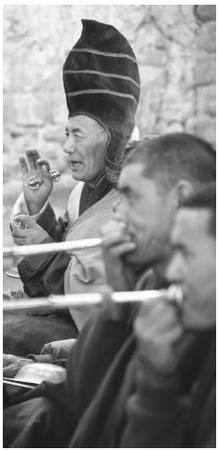
Hindu castes do not generally approve of cross-cousin marriage, which is preferred among some Mongolian ethnic groups. Among some groups, a brideprice substitutes for a dowry. In others, clan exogamy is an important feature of marriages. Until recently, polygyny was legal and relatively common. Now it is illegal and found only in the older generation and in remote areas. Child marriages were considered especially auspicious, and while they continue to be practiced in rural areas, they are now prohibited by law. Love marriage is gaining in popularity in the cities, where romantic films and music inform popular sentiment and the economy offers younger people economic independence from the extended family.
Domestic Unit. Among landholding Hindu castes, a high value is placed on joint family arrangements in which the sons of a household, along with their parents, wives, and children, live together, sharing resources and expenses. Within the household, the old have authority over the young, and men over women. Typically, new daughters-in-law occupy the lowest position. Until a new bride has produced children, she is subject to the hardest work and often the harshest criticism in her husband's household. Older women, often wield a great deal of influence within the household.
The emphasis in joint families is on filial loyalty and agnatic solidarity over individualism. In urban areas, an increasing number of couples are opting for nuclear family arrangements.
Inheritance. Fathers are legally obligated to leave equal portions of land to each son. Daughters do not inherit paternal property unless they remain unmarried past age thirty-five. Although ideally sons manage their father's land together as part of a joint family, familial land tends to be divided, with holdings diminishing in every generation.
Kin Groups. Patrilineal kin groups form the nucleus of households, function as corporate units, and determine inheritance patterns. A man belongs permanently to the kinship group of his father, while a woman changes membership from her natal kin group to the kin group of her husband at the time of marriage. Because family connections are critical in providing access to political influence and economic opportunities, marriage alliances are planned carefully to expand kinship networks and strengthen social ties. Although women join the husband's household, they maintain emotional ties and contact with their families. If a woman is mistreated in her husband's household, she may escape to her father's house or receive support from her male kin. Consequently, women often prefer to marry men from the same villages.
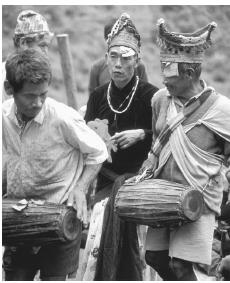
Socialization
Infant Care. Infants are carried on the mothers' back, held by a shawl tied tightly across her chest. Babies are breast-fed on demand, and sleep with their mothers until they are displaced by a new baby or are old enough to share a bed with siblings. Infants and small children often wear amulets and bracelets to protect them from supernatural forces. Parents sometimes line a baby's eyes with kohl to prevent eye infections.
Child Rearing and Education. Mothers are the primary providers of child care, but children also are cared for and socialized by older siblings, cousins, and grandparents. Often children as young as five or six mind younger children. Neighbors are entitled to cuddle, instruct, and discipline children, who are in turn expected to obey and defer to senior members of the family and community. Children address their elders by using the honorific form of Nepali, while adults speak to children using more familiar language. Because authority in households depends on seniority, the relative ages of siblings is important and children are often addressed by birth order.
Certain household rituals mark key stages in child's development, including the first taste of rice and the first haircut. When a girl reaches puberty, she goes through a period of seclusion in which she is prohibited from seeing male family members. Although she may receive special foods and is not expected to work, the experience is an acknowledgment of the pollution associated with female sexuality and reproductivity.
From an early age, children are expected to contribute labor to the household. The law entitles both girls and boys to schooling; however, if a family needs help at home or cannot spare the money for uniforms, books, and school fees, only the sons are sent to school. It is believed that education is wasted on girls, who will marry and take their wage-earning abilities to another household. Boys marry and stay at home, and their education is considered a wise investment.
The customary greeting is to press one's palms together in front of the chest and say namaste ("I greet the god within you"). Men in urban areas have adopted the custom of shaking hands. In the mainstream culture, physical contact between the sexes is not appropriate in public. Although men may be openly affectionate with men and women with women, even married couples do not demonstrate physical affection in public. Some ethnic groups permit more open contact between the sexes.
Hospitality is essential. Guests are always offered food and are not permitted to help with food preparation or cleaning after a meal. It is polite to eat with only the right hand; the hand used to eat food must not touch anything else until it has been thoroughly washed, for saliva is considered defiling. When drinking from a common water vessel, people do not touch the rim to their lips. It is insulting to hit someone with a shoe or sandal, point the soles of one's feet at someone, and step over a person.
Religious Beliefs. Eighty-six percent of Nepalis are Hindus, 8 percent are Buddhists, 4 percent are Muslims, and just over 1 percent are Christians. On a day-to-day level, Hindus practice their religion by "doing puja, " making offerings and prayers to particular deities. While certain days and occasions are designated as auspicious, this form of worship can be performed at any time.
Buddhism is practiced in the Theravadan form. There are two primary Buddhist traditions: the Buddhism of Tibetan refugees and high-altitude ethnic groups with cultural roots in Tibet and the Tantric form practiced by Newars.
There is a strong animistic and shamanic tradition. Belief in ghosts, spirits, and witchcraft is widespread, especially in rural areas. Spiteful witches, hungry ghosts, and angry spirits are thought to inflict illness and misfortune. Shamans mediate between the human and supernatural realms to discover the cause of illness and recommend treatment.
Religious Practitioners. Many forms of Hindu worship do not require the mediation of a priest. At key rites of passage such as weddings and funerals, Brahmin priests read Vedic scriptures and ensure the correct performance of rituals. At temples, priests care for religious icons, which are believed to contain the essence of the deities they represent. They are responsible for ensuring the purity of the temple and overseeing elaborate pujas.
Buddhist monasteries train young initiates in philosophy and meditation. Lay followers gain religious merit by making financial contributions to monasteries, where religious rites are performed on behalf of the general population. Within Buddhism there is a clerical hierarchy, with highly esteemed lamas occupying the positions of greatest influence. Monks and nuns of all ranks shave their heads, wear maroon robes, and embrace a life of celibacy and religious observance.
Rituals and Holy Places. Nepal occupies a special place in both Hindu and Buddhist traditions. According to Hindu mythology, the Himalayas are the abode of the gods, and are specifically associated with Shiva, one of the three principal Hindu deities. Pashupatinath, a large Shiva temple in Kathmandu, is among the holiest sites in Nepal and attracts Hindu pilgrims from all over South Asia. Pashupatinath is only one of thousands of temples and shrines scattered throughout Nepal, however. In the Kathmandu Valley alone, there are hundreds of such shrines, large and small, in which the major gods and goddesses of the Hindu pantheon, as well as local and minor divinities, are worshiped. Many of these shrines are constructed near rivers or at the base of pipal trees, which are themselves considered sacred. For Buddhists, Nepal is significant as the birthplace of Lord Buddha. It is also home to a number of important Buddhist monasteries and supas, including Boudha and Swayambhu, whose domeshaped architecture and painted all-seeing eyes have become symbols of the Kathamandu Valley.
Death and the Afterlife. Hindus and Buddhists believe in reincarnation. An individual's meritorious actions in life will grant him or her a higher rebirth. In both religions the immediate goal is to live virtuously in order to move progressively through higher births and higher states of consciousness. Ultimately, the goal is to attain enlightenment, stopping the cycle of rebirth.
In the Hindu tradition, the dead are cremated, preferably on the banks of a river. It is customary for a son to perform the funeral rites. Some Buddhists also cremate bodies. Others perform what are called "sky burials," in which corpses are cut up and left at sacred sites for vultures to carry away.
Medicine and Health Care
Infant mortality is high, respiratory and intestinal diseases are endemic, and malnutrition is widespread in a country where life expectancy is fifty-seven years. Contributing to this situation are poverty, poor hygiene, and lack of health care. There are hospitals only in urban areas, and they are poorly equipped and unhygienic. Rural health clinics often lack personnel, equipment, and medicines. Western biomedical practices have social prestige, but many poor people cannot afford this type of health care. Many people consult shamans and other religious practitioners. Others look to Ayurvedic medicine, in which illness is thought to be caused by imbalances in the bodily humors. Treatment involves correcting these imbalances, principally through diet. Nepalis combine Ayurvedic, shamanic, biomedical, and other systems.
Although health conditions are poor, malaria has been eradicated. Development efforts have focused on immunization, birth control, and basic medical care. However, the success of all such projects seems to correlate with the education levels of women, which are extremely low.
The Arts and Humanities
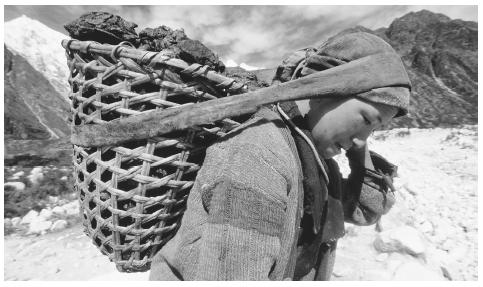
Graphic Arts. Much of Nepali art is religious. Newari artisans create cast-bronze statuary of Buddhist and Hindu deities as well as intricately painted tangkas that describe Buddhist cosmology. The creation and contemplation of such art constitutes a religious act.
Performance Arts. Dramatic productions often focus on religious themes drawn from Hindu epics, although political satire and other comedic forms are also popular. There is a rich musical heritage, with a number of distinctive instruments and vocal styles, and music has become an marker of identity for the younger generation. Older people prefer folk and religious music; younger people, especially in urban areas, are attracted to romantic and experimental film music as well as fusions of Western and Asian genres.
The State of the Physical and Social Sciences
Universities are underfunded, faculties are poorly paid, and library resources are meager. Nepalis accord less respect to degrees from universities than to degrees obtained abroad and many scholars seek opportunities to study overseas or in India. Despite these limitations, some fine scholarship has emerged, particularly in the social sciences. In the post-1990 period, political reforms have permitted a more open and critical intellectual environment.
Bibliography
Acharya, Meena, and Lynn Bennett. "The Rural Women of Nepal: An Aggregate Analysis and Summary of Eight Village Studies." The Status of Women in Nepal, 1981.
Adams, Vincanne. Tigers of the Snow and Other Virtual Sherpas: An Ethnography of Himalayan Encounters, 1996.
Ahearn, Laura Marie. "Consent and Coercion: Changing Marriage Practices Among Magars in Nepal." Ph.D. dissertation. University of Michigan, 1994.
Allen, Michael, and S. N. Mukherjee, eds. Women in India and Nepal, 1990.
Bennett, Lynn. Dangerous Wives and Sacred Sisters: Social and Symbolic Roles of High-Caste Women in Nepal, 1983.
Bista, Dor Bahadur. Fatalism and Development: Nepal's Struggle for Modernization, 1991.
Blaikie, Piers, John Cameron, and David Seddon. Nepal in Crisis: Growth and Stagnation at the Periphery, 1978.
Borgstrom, Bengt-Erik. The Patron and the Panca: Village Values and Pancayat Democracy in Nepal, 1980.
Borre, Ole, Sushil R. Pandey, and Chitra K. Tiwari. Nepalese Political Behavior, 1994.
Brown, T. Louise. The Challenge to Democracy in Nepal: A Political History, 1996.
Burghart, Richard. "The Formation of the Concept of Nation-State in Nepal." Journal of Asian Studies, 1984.
Cameron, Mary Margaret. On the Edge of the Auspicious, 1993.
Caplan, Lionel. "Tribes in the Ethnography of Nepal: Some Comments on a Debate." Contributions to Nepalese Studies 17 (2): 129–145, 1990.
Caplan, Patricia. Priests and Cobblers: A Study of Social Change in a Hindu Village in Western Nepal, 1972.
Des Chene, Mary. "Ethnography in the Janajati-yug: Lessons from Reading Rodhi and other Tamu Writings." Studies in Nepali History and Society 1: 97–162, 1996.
Desjarlais, Robert. Body and Emotion: The Aesthetics of Illness and Healing in the Nepal Himalaya, 1992.
Doherty, Victor S. "Kinship and Economic Choice: Modern Adaptations in West Central Nepal." Ph.D. dissertation. University of Wisconsin, Madison, 1975.
Fisher, James F. Sherpas: Reflections on Change in Himalayan Nepal, 1990.
Fricke, Tom. Himalayan Households: Tamang Demography and Domestic Processes, 1994.
——, William G. Axinn, and Arland Thornton. "Marriage, Social Inequality, and Women's Contact with Their Natal Families in Alliance Societies: Two Tamang Examples." American Anthropologist 95 (2): 395–419, 1993.
Furer-Haimendorf, Christoph von. The Sherpas Transformed. Delhi: Sterling, 1984.
——, ed. Caste and Kin in Nepal, India and Ceylon, 1966.
Gaige, Frederick H. Regionalism and National Unity in Nepal, 1975.
Gellner, David N., Joanna Pfaff-Czarnecka, and John Whelpton. Nationalism and Ethnicity in a Hindu Kingdom: The Politics of Culture in Contemporary Nepal, 1997.
Ghimire, Premalata. "An Ethnographic Approach to Ritual Ranking Among the Satar." Contributions to Nepalese Studie 17 (2): 103–121, 1990.
Gilbert, Kate. "Women and Family Law in Modern Nepal: Statutory Rights and Social Implications." New York University Journal of International Law and Politics 24: 729–758, 1992.
Goldstein, Melvyn C. "Fraternal Polyandry and Fertility in a High Himalayan Valley in Northwest Nepal." Human Ecology 4 (2): 223–233, 1976.
Gray, John N. The Householder's World: Purity, Power and Dominance in a Nepali Village, 1995.
Gurung, Harka Bahadur. Vignettes of Nepal. Kathmandu: Sajha Prakashan, 1980.
Hagen, Toni. Nepal: The Kingdom in the Himalayas, 1961.
Hitchcock, John. The Magars of Bunyan Hill, 1966.
Hofer, Andras. The Caste Hierarchy and the State in Nepal: A Study of the Muluki Ain of 1854, 1979.
Holmberg, David. Order in Paradox: Myth, Ritual and Exchange among Nepal's Tamang, 1989.
Hutt, Michael. "Drafting the 1990 Constitution." In Michael Hutt, ed., Nepal in the Nineties, 1994.
Iijima, Shigeru. "Hinduization of a Himalayan Tribe in Nepal." Kroeber Anthropological Society Papers 29: 43– 52, 1963.
Jones, Rex, and Shirley Jones. The Himalayan Woman: A Study of Limbu Women in Marriage and Divorce, 1976.
Justice, Judith. Policies, Plans and People: Culture and Health Development in Nepal, 1985.
Karan, Pradyumna P., and Hiroshi Ishii. Nepal: A Himalayan Kingdom in Transition, 1996.
Kondos, Alex. "The Question of 'Corruption' in Nepal." Mankind 17 (1): 15–29, 1987.
Kumar, Dhruba, ed. State Leadership and Politics in Nepal, 1995.
Landan, Perceval. Nepal, 1976.
Levine, Nancy. The Dynamics of Polyandry: Kinship, Domesticity, and Population on the Tibetan Border, 1988.
Levy, Robert I. Mesocosm: Hinduism and the Organization of a Traditional Newar City in Nepal, 1990.
Liechty, Mark. "Paying for Modernity: Women and the Discourse of Freedom in Kathmandu." Studies in Nepali History and Society 1: 201–230, 1996.
MacFarland, Alan. Resources and Population: A Study of the Gurungs of Nepal, 1976.
Manzardo, Andrew E. "To Be Kings of the North: Community, Adaptation, and Impression Management in the Thakali of Western Nepal." Ph.D. dissertation. University of Wisconsin, Madison, 1978.
Messerschmidt, Donald A. "The Thakali of Nepal: Historical Continuity and Socio-Cultural Change." Ethnohistory 29 (4): 265–280, 1982.
Molnar, Augusta. "Women and Politics: Case of the Kham Magar of Western Nepal." American Ethnologist 9 (3): 485–502, 1982.
Nepali, Gopal Singh. The Newars, 1965.
Oldfield, Henry Ambrose. Sketches from Nepal, Historical and Descriptive, 1880, 1974.
Ortner, Sherry B. High Religion: A Cultural and Political History of Sherpa Buddhism, 1989.
Pigg, Stacy Leigh. "Inventing Social Categories through Place: Social Representations and Development in Nepal." Comparative Studies in Society and History 34: 491–513, 1992.
Poudel, P. C., and Rana P. B. Singh. "Pilgrimage and Tourism at Muktinath, Nepal: A Study of Sacrality and Spatial Structure." National Geographical Journal of India 40: 249–268, 1994.
Regmi, Mahesh C. Thatched Huts and Stucco Palaces: Peasants and Landlords in 19th Century Nepal, 1978.
Rosser, Colin. "Social Mobility in the Newar Caste System." In Christoph von Furer-Haimendorf, ed. Caste and Kin in Nepal, India, and Ceylon, 1966.
Shaha, Rishikesh. Politics of Nepal, 1980–1991: Referendum, Stalemate, and Triumph of People Power, 1993.
Shrestha, Nirakar Man. "Alcohol and Drug Abuse in Nepal." British Journal of Addiction 87: 1241–1248, 1992.
Slusser, Mary S. Nepal Mandala: A Cultural Study of the Kathmandu Valley, 1982.
Stevens, Stanley F. Claiming the High Ground: Sherpas, Subsistence and Environmental Change in the Highest Himalaya, 1993.
Stone, Linda. Illness Beliefs and Feeding the Dead in Hindu Nepal: An Ethnographic Analysis, 1988.
Thompson, Julia J. "'There are Many Words to Describe Their Anger': Ritual and Resistance among High-Caste Hindu Women in Kathmandu." In Michael Allen, ed., Anthropology of Nepal: Peoples, Problems, and Processes, 1994.
Tingey, Carol. Auspicious Music in a Changing Society, 1994.
Vansittart, Eden. The Gurkhas, 1890, 1993.
Vinding, Michael. "Making a Living in the Nepal Himalayas: The Case of the Thakali of Mustang District." Contributions to Nepalese Studies 12 (1): 51–105, 1984.
—M ARIE K AMALA N ORMAN
User Contributions:
Comment about this article, ask questions, or add new information about this topic:.

Four Short Essay & Paragraph On Country Nepal
Nepal is a small Asian nation. It is commonly referred to as the ‘top of the world.’ It is bordered on the south by India, on the north and east by China, and on the west by Tibet. Nepal is a term that signifies “country of Nepalis” or “our own country.”
Table of Contents
Short Essay And Paragraphs About Nepal In English
1. short paragraph on country nepal.
Nepal has a number of public holidays that are honored all year. Magh 8, May 28 (Democratic Victory Day), Janai Purnima, and Nwaran/Dashain/Tihar (Owls Festival), also known as Diwali in India, are among them. Dashain is Nepal’s most important festival, which is observed by all Hindus in Nepal and India as a victory over bad spirits. The Losar is another major Nepalese event (Tibetan New Year ).
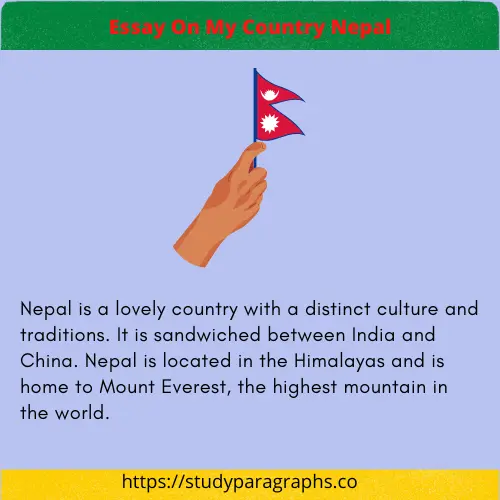
Nepal’s geography is diversified, with lush plains, river valleys, high mountains, and rough highlands. Nepal is home to Mount Everest, the world’s highest peak. There are numerous attractive spots in the nation that draw tourists from all around the world. Mandu Valley, Pokhara, Lumbini, Kathmandu, and Chitwan National Park are among the most popular tourist sites in Nepal.
Nepal is a country that is rapidly developing. It was severely impacted by the recent ‘Great Earthquake,’ which killed over 8500 people and injured 22,000 more. The Nepalese government is providing all possible help to individuals who have sustained losses as a result of the earthquake.
This has created an opportunity for foreign assistance agencies and non-governmental organisations (NGOs) to provide relief and assist in rebuilding Kathmandu and other hard-hit districts. Many non-governmental organisations (NGOs) such as Save the Children, ActionAid International, Oxfam International, and others are working in various districts of Nepal to provide health care, food security, and housing assistance to women and children affected by the earthquake.
Nepal is a lovely country with a distinct culture and traditions. It is sandwiched between India and China. Nepal is located in the Himalayas and is home to Mount Everest, the highest mountain in the world. Nepali and English are the primary languages. Among the religions are Hinduism, Buddhism, and Islam.
2. Brief Essay on Nepal
Nepal is a small landlocked country located in South Asia, bordered by China and India. With a population of around 29 million, Nepal is known for its diverse culture and geography, which ranges from the Himalayan mountain range in the north to the tropical Terai region in the south.
Nepal is home to eight of the world’s ten highest peaks, including Mount Everest, the highest peak in the world. The country’s rugged terrain and high altitude make it a popular destination for mountaineers and trekkers from around the world. The diverse landscapes of Nepal, including the Himalayas, forests, and rivers, also make it a haven for outdoor enthusiasts, adventure seekers, and nature lovers.
The culture of Nepal is deeply rooted in its Hindu and Buddhist heritage. The Kathmandu Valley, the country’s cultural and historical heart, is home to several UNESCO World Heritage sites, including the Swayambhunath Stupa, also known as the Monkey Temple, and the Pashupatinath Temple, a sacred Hindu temple. Nepal is also famous for its traditional festivals, such as the Tihar festival, which is celebrated with the lighting of oil lamps, and the Dashain festival, which marks the victory of good over evil.
Despite its natural beauty and rich cultural heritage, Nepal is one of the poorest countries in the world, with a low per capita income and high levels of poverty. The country has been facing political instability and economic challenges in recent years. However, it is also a country that is resilient and hardworking, with a strong sense of community and hospitality.
In conclusion, Nepal is a small landlocked country located in South Asia, known for its diverse culture and geography. From the Himalayas to the tropical Terai region, the natural landscapes of Nepal are a paradise for outdoor enthusiasts and nature lovers. The culture of Nepal is deeply rooted in its Hindu and Buddhist heritage, and is reflected in its traditional festivals and UNESCO World Heritage sites. Despite its poverty, Nepal is a resilient and hardworking country with a strong sense of community and hospitality.
3. Essay on Nepali Language
Nepali, also known as Nepalese or Gurkha, is the official language of Nepal and is spoken by around 17 million people in Nepal and Bhutan, as well as by a significant number of people in India and around the world. Nepali is a member of the Indo-Aryan branch of the Indo-European language family, and it is closely related to Hindi and Bengali.
Nepali is written in the Devanagari script, which is also used to write Hindi and Sanskrit. The script is made up of a combination of vowels and consonants, and it is read from left to right. The language has a rich vocabulary, and it has been heavily influenced by Sanskrit and other languages spoken in the region.
Nepali is a tonal language, which means that the meaning of words can change depending on the tone used to pronounce them. It has two tones, the high and low tone, which are indicated by diacritics above the letters.
The Nepali language has a rich literary tradition, and it has produced many poets, writers, and scholars. Nepali literature has a history that dates back centuries and it encompasses many genres, such as poetry, novels, and plays. The language has also been used in the field of education, and it is taught in schools and universities in Nepal and abroad.
Nepali is also a language of great cultural significance. It is spoken by many ethnic groups in Nepal, each with their own unique dialects, customs, and traditions. The language is a vital part of Nepal’s cultural heritage, and it is an important tool for preserving the country’s rich cultural diversity.
4. Essay on Nepali Culture
Nepali culture is a rich tapestry of diverse customs, traditions, and beliefs that have been shaped by the country’s history, geography, and ethnic diversity. Nepal is a small landlocked country located in South Asia, and it is known for its diverse culture and geography, which ranges from the Himalayan mountain range in the north to the tropical Terai region in the south.
One of the most important aspects of Nepali culture is its religious heritage. Nepal is predominantly a Hindu country, and Hinduism is deeply ingrained in the culture and daily life of Nepalese people. The country is also home to a significant Buddhist population, and the two religions coexist in harmony. The Kathmandu Valley, the country’s cultural and historical heart, is home to several UNESCO World Heritage sites, including the Swayambhunath Stupa, also known as the Monkey Temple, and the Pashupatinath Temple, a sacred Hindu temple.
Nepali culture is also known for its traditional festivals, which are celebrated throughout the year. The Tihar festival, also known as the festival of lights, is celebrated with the lighting of oil lamps, and the Dashain festival, which marks the victory of good over evil. These festivals are an important part of Nepali culture and bring communities together to celebrate, dance and feast.
Another important aspect of Nepali culture is its art and craft. Nepal is famous for its traditional handicrafts, such as pottery, weaving, and metalwork, which are produced by skilled artisans. Nepali art is also known for its intricate carvings, which can be found on temples and shrines throughout the country.
The Nepali language is also an important aspect of the culture, it is spoken by around 17 million people in Nepal and Bhutan, as well as by a significant number of people in India and around the world. It has a rich vocabulary, and it has been heavily influenced by Sanskrit and other languages spoken in the region.
In conclusion, Nepali culture is a rich tapestry of diverse customs, traditions, and beliefs that have been shaped by the country’s history, geography, and ethnic diversity. Religion, festivals, art, crafts, and language are some of the most important aspects of Nepali culture. Nepal is a small landlocked country located in South Asia.

Hello! Welcome to my Blog StudyParagraphs.co. My name is Angelina. I am a college professor. I love reading writing for kids students. This blog is full with valuable knowledge for all class students. Thank you for reading my articles.
Related Posts:
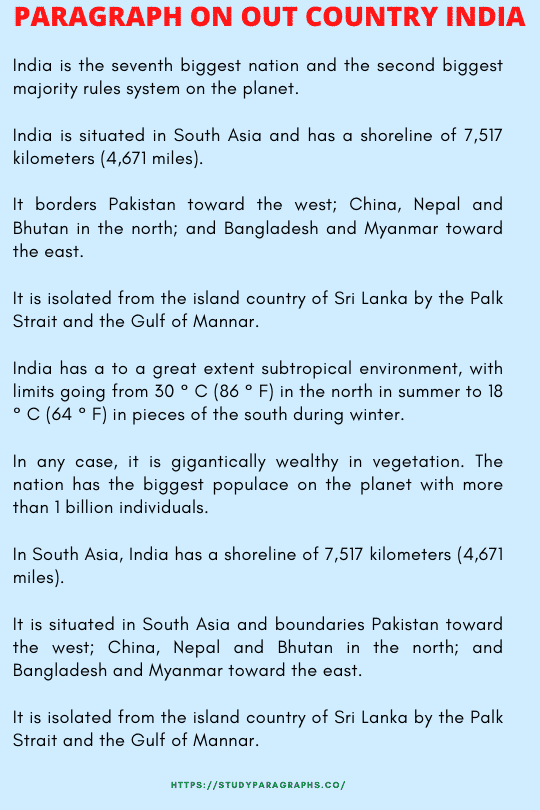
- Practice Test
Essay on My Country Nepal
Akancha Chhetri
Content Writer | Updated: March 26, 2024 12:45 NST
Nepal is a landlocked country with highly diverse and rich geography, culture, and religions. It is situated in South Asia on the lap of the huge Himalayas surrounded by India in the east, south, and west and China in the north. It occupies an area of 147,516 sq. km . with an average of 193km wide from North to South and an average length (East to West) is 885km. It provides a variety of geographical structures owning a large number of natural gifts.
Geographically, Nepal is divided into three regions. The mountain regions, Hilly and Terai regions occupy about 15%, 68%, and 17% of the total area of Nepal respectively. Nepal owns many snow-capped lofty mountains. The highest peak in the world, Mt.Everest attracts thousands of tourists every year. For administrative purposes, Nepal has been divided into seven provinces, and the provinces are divided into 77 districts. the districts are further divided into municipalities and rural municipalities.
The magnificent mountains in the north, undulating slopes, passes, swift-flowing crystal-like rivers, lakes, valleys, tars, etc are attractive things that identify Nepal as a piece of heaven. It has been a major choice of a large number of foreign tourists for the last few decades. The world's highest mountain Mt. Everest, called the roof of the world identifies Nepal throughout the world. It also possesses a lake at the highest altitude, the deepest gorge, and so on.
We are renowned around the globe for not only our natural heritage but also for our cultural heritage. The major heritages that are listed in the World Heritage List such as Lumbini, Chitwan National Park, Sagarmatha National Park and many more introduce us as prosperous people of small heaven. Moreover, one can see several temples, and Kathmandu is a city of temples.
It is the land that gave birth to world-famous persons. Gautam Buddha, the preacher of peace and founder of Buddhism, Prithivi Narayan Shah, the builder of modern unified Nepal. Tenzing Norgay Sherpa, the first human to reach the summit of Mt. Everest with Hilary, etc. were those who possessed to Nepal. Not only them, but brave soldiers such as Bal Bhadra Kunwar, Amar Singh Thapa, Bhimsen Thapa, and others demonstrated extraordinary bravery in preventing the British empire from colonizing Nepal.
Though Nepal is a multi-lingual, multi-cultural, multi-ethnic, multi-religious country, there has not been any conflict between any group in the name of language, religion, or ethnicity. the unity among diversity that is prevalent in Nepal proves that Nepalese are cooperative and peace-loving. It also inspires other nations to follow its people's harmonious unity. Nepalese people respect guests as their gods since there is a popular belief that "Atithi Debo Bhawa". It is a strong example to prove that Nepalese are spiritually rich though they are economically poor. Nepalese people love freedom and democracy. That is why they have fought several times for democracy through their leaders deceiving them time and again. Recently, Nepal has been declared a republic country and promulgated a new constituent.
- +2 Science Colleges
- +2 Management Colleges
- +2 Law Colleges
Be the first to know! Join our newsletter for exclusive updates and news delivered straight to your inbox.

Essay on Nepali Culture
Students are often asked to write an essay on Nepali Culture in their schools and colleges. And if you’re also looking for the same, we have created 100-word, 250-word, and 500-word essays on the topic.
Let’s take a look…
100 Words Essay on Nepali Culture
Introduction to nepali culture.
Nepali culture is like a beautiful garden with many kinds of flowers. It is a mix of traditions, values, and customs. This culture comes from the people of Nepal, a country in South Asia. It is known for its mountains, like Mount Everest, and its history.
Language and Religion
In Nepal, many people speak Nepali, but there are over 120 other languages too. Religion is important, with Hinduism and Buddhism being the most followed. Many festivals come from these religions, which people celebrate with joy.
Festivals and Food
Nepali festivals are colorful and full of life. Dashain and Tihar are the biggest ones. People eat special foods, play music, and enjoy dances. The food in Nepal is tasty and includes dishes like dal bhat (rice and lentils) and momo (dumplings).
Traditional Clothing
In Nepal, traditional clothes are worn with pride. Men wear a daura-suruwal and women wear a sari or kurta. These clothes are often made with bright colors and fine materials, showing the beauty of Nepali handwork.
Art and Music
Art and music are important in Nepal. Paintings and sculptures show stories of gods and daily life. The music is made with instruments like the madal and sarangi, creating tunes that are both happy and sad.
250 Words Essay on Nepali Culture
Nepali culture is like a beautiful garden with many kinds of flowers. It is rich with traditions, festivals, music, and dances. Nepal is a country in South Asia, home to the tall Mount Everest and many other mountains. The people living there come from different backgrounds and speak many languages, but they all share the culture of Nepal.
Festivals and Celebrations
One of the most important parts of Nepali culture is festivals. Dashain is the biggest festival where families come together, enjoy food, and children get gifts. Tihar, another festival, is when people light up their homes with candles and lamps. They also honor animals like crows, dogs, and cows. These festivals show how Nepalese people love family, nature, and animals.
Food in Nepal
The food of Nepal is tasty and unique. Dal Bhat, which is rice and lentil soup, is a common meal. Momos, which are like dumplings filled with meat or vegetables, are very popular too. The food is not just about eating; it is a way for families to sit together and share their day.
In Nepal, people wear special clothes that are part of their culture. Men often wear a dress called Daura-Suruwal and a cap named Dhaka Topi. Women wear beautiful long skirts called Gunyu Cholo. These clothes are not just for daily wear but also for special occasions to show respect to their culture.
In conclusion, Nepali culture is full of life, colors, and joy. It brings people together through festivals, food, and clothing. Even though it has many different parts, they all fit together to make the culture of Nepal special and interesting for everyone, especially for students learning about new places in the world.

500 Words Essay on Nepali Culture
Nepali culture is like a beautiful garden with many kinds of flowers. It is rich with traditions, art, festivals, and music. Nepal is a small country between China and India. Yet, it has a big heart filled with cultural treasures. People from different backgrounds live together in Nepal, sharing their customs and beliefs.
In Nepal, many languages are spoken. Nepali is the main language, but people also speak Maithili, Bhojpuri, and dozens of other languages. This shows how diverse the country is. Religion is a big part of life in Nepal. Most people follow Hinduism or Buddhism. The two religions mix in many ways, showing respect and peace among the people.
Nepal is known for its colorful festivals. Dashain is the biggest festival. It is a time when families come together, share food, and give blessings. Tihar, also known as the festival of lights, is another important celebration. People light up their homes and honor animals like dogs and cows. These festivals show the joy and kindness in Nepali culture.
Food and Cuisine
Food in Nepal is tasty and unique. Dal Bhat, a dish of lentils and rice, is eaten almost every day. Momos, which are dumplings filled with meat or vegetables, are a favorite snack. The food is not just about taste; it is also about bringing family and friends together to share a meal.
The clothes in Nepal are bright and beautiful. Women often wear sarees or a long skirt called a ‘gunyu cholo’. Men wear a ‘daura suruwal’, which is a shirt and trousers with a Nepali style. These clothes are worn with pride, especially during festivals and important events. They are a symbol of the Nepali way of life.
Music and Dance
Music and dance are important in Nepal. They tell stories of the land and its people. Traditional instruments like the ‘madal’ and ‘sarangi’ make music that touches the heart. Folk dances are performed during festivals. They are full of energy and smiles, showing the happiness of the Nepali spirit.
Arts and Crafts
Nepali arts and crafts are famous for their beauty. Paintings, pottery, and sculptures are made with great skill. Many of these items show scenes from religion and nature. They are not just things to look at; they are pieces of the soul of Nepal.
Nepali culture is a wonderful mix of people, traditions, and nature. It is like a colorful painting that tells a story of harmony and friendship. The culture is deep and alive, touching everyone who experiences it. It is a treasure that the people of Nepal share with the world, and it makes the country a special place full of warmth and beauty.
That’s it! I hope the essay helped you.
If you’re looking for more, here are essays on other interesting topics:
- Essay on Nepal
- Essay on Neolithic Revolution
- Essay on Gardening With Family
Apart from these, you can look at all the essays by clicking here .
Happy studying!
Leave a Reply Cancel reply
Your email address will not be published. Required fields are marked *
Save my name, email, and website in this browser for the next time I comment.

Essay about My Country Nepal | 200,300,400 words
Nepal is a country located in South Asia, between India and China. It is a landlocked country with an area of 147,181 square kilometers, and it is the world’s 43rd largest country by area. Nepal is known for its diverse geography, which includes the Himalayas, the highest mountain range in the world. The country has a population of approximately 29 million people, and the capital and largest city is Kathmandu. The official language of Nepal is Nepali, and the country’s economy is primarily based on agriculture and tourism.
Nepal has a rich history and cultural heritage, and it is home to many important religious sites for Hinduism and Buddhism. The country has a diverse range of ethnic and linguistic groups, and many different religions and customs are practiced in Nepal. The Nepali people are known for their hospitality and friendly nature, and tourism is a significant contributor to the country’s economy. Nepal is also known for its natural beauty, and it is a popular destination for trekking and mountaineering.
The government of Nepal is a federal parliamentary republic, and the current president is Bidhya Devi Bhandari. The country is divided into seven provinces, which are further divided into 77 districts. The government of Nepal is working to promote economic growth and development, and the country has made significant progress in recent years. However, Nepal still faces many challenges, including poverty, illiteracy, and political instability. Despite these challenges, the people of Nepal are known for their resilience and determination, and the country is rich in natural beauty and cultural diversity.
Nepal is still recovering from a devastating earthquake in 2015, and many people are working to rebuild and improve the infrastructure and economy of the country. The government of Nepal is working to address the needs of the people and promote economic growth, and it has made significant progress in recent years. However, Nepal faces many challenges, and the country needs the support of the international community to continue its development.
Leave a Reply Cancel reply
Your email address will not be published. Required fields are marked *
Save my name, email, and website in this browser for the next time I comment.
- Mountain Guide Trekking in Nepal: Comprehensive online guide to adventure holiday!
- +977 98510 36910 (Ram)

Our culture our pride
Home » Blog » Our culture our pride
When I was in middle- School, our teacher used to ask us to write an essay on topics like the national animal, the national bird, the national festival and the culture of various athnic groups. In our Nepali text books, we read poems of Laxmi Prasad Devkota, and I vividly remember one of his essay that described Nepal, it resources and its culture. “4 castes with 36 sub-castes under one umbrella” used to be what I wrote in almost all of my attempts to describe Nepal. Today, I am proud that I was born to a culture that rich and living here in the U.S. has made me realize even more the diversity of our nation.
According to visitnepal.com, Nepal has over 40 different ethnic groups and tribes. From the popular and brave Sherpas of the Himalayans, to the Brahmans and Chhetris of the Kathmandu valley, and to the Tharus of the South, Nepal is composed of numerous ethnic identities. The Taute’s are another tribe of Nepal, who live the nomadic life and travel from one place to another within the western region of Nepal, I looking for shelter and food.
Today, the Kathmandu valley has become the melting pot, as it is the most developed part of the nation. While I was in Nepal during this past summer, I heard people on the streets talking in unfamiliar languages. Lot of people have migrated from the rural areas to live in the city. And the beauty of this diversity is that we are all under one common roof, and though we have different cultural identities, we are all Nepalese.
I may have not realized how much I value my culture if wasn’t away from it. In my collage, we have two functions in one academic year that are for representation of international diversity on campus. Hence, we all get so excited for the International Festival. We wear our traditional dresses, and dress in different cultural attires, just so that we can give justice to our cultural identity. When people ask us about any of our traditional practices we jump in with excitement to explain what it means, and difference in this context is highly appreciated.
If I wasn’t far away from home, I would care less about dressing in a sari for the international festival, or I would care less about wearing “Cholo and Fariya” to present myself in any international functions, coming to a foreign land has accentuated the value of my culture. This is probably because, the only way we can distinct we in this place filled with people from all parts of the world is through our culture. Our norms and traditions become our identification, and it is the need to stand out that pushes us further. So exposing the variation and diversity of our roots makes us proud to be who we are. Even though we may have not realized it when we were writing that essay in middle school for mere points, we do realize it now that in a foreign land our identity rests upon our culture and pride is what we get when we portray it exuberantly. Therefore, I can honestly say Our culture, Our Pride.

- Date Converter
- Nepali Unicode
- Preeti to Unicode
- Unicode to Preeti
- Digital Marketing
- Entertainment
Essay About Tihar Festival

What is Tihar?
Tihar also is known as Dipawali is one of the greatest festivals of Nepal. Not only Nepal, but it is also celebrated in Indian states. It generally falls in the month of October/November. Tihar is the second biggest festive celebration in Nepal after Dashain. It is known as Swanti among Newars and Diwali among the Madhesis community. This festival is known as the festival of lights. Lights are the prominent feature of this festival. Diyos are lit inside and outside of the house during the night. People keep their houses and surrounding very neat and clean. They decorate their house with flowers, pictures, and keep oil lamps burning at night. Moreover, different patterns and designs are also made on the floor using color, rice, sand, etc. known as Rangoli, which is regarded as the sign of welcome to Goddess Laxmi. The festival is celebrated for five days. Hence, it is known as Panchak.
The festival begins in Triyodashi of Karthik Krishna Paksha, a day is known as Kag Tihar, and ends in Dutiya of Kartik Sukla Paksha, a day is known as Bhai Tika. The first day is called the Kag Tihar. On this day, Crow or Kag is worshipped as the message carrier. Similarly on the second day known as Kukur Tihar¸people worship dogs as the protector of the houses and properties. According to the Hindu scripture, Yamaraj, the god of death is believed to have two dogs who were the guard of the Narga, the hell. So, People offer garlands, tika, and provide them food. The third day of Tihar is known as Laxmi Pooja. Goddess Laxmi is worshipped on this day.
Laxmi is regarded as the Goddess of fortune or wealth. So, in this day Cows are worshipped as an incarnation of Goddess Laxmi. They feed cows and offer garlands. It is believed that people can have a lot of wealth if Goddess Laxmi is pleased. So, Houses and surroundings are kept clean, decorations are done with garlands of Saya Patri and Makhamali. In the evening time, Goddess Laxmi is welcomed in the house by lighting different oil lamps or candles around the house so as to bring prosperity and wellbeing.
📌 Another Essay – Essay on Importance of English Language
At night, the girls enjoy dancing and singing known as Bhailo. They visit houses of neighbors all night collecting amount as the tip or the charity for them. On the fourth day, different poojas are performed depending on the people’s culture. Mainly, people worship oxen as a useful and faithful animal. The followers of Vaishnavism do Govardhan Pooja by worshipping the cow dung as the reflector to Govardhan Mountain. Moreover, in the evening the Newari Community performs the Maha Pooja(self-worship). The day marks the new year of the Nepal Sambat Calendar. Moreover, in this day people especially boys enjoy playing Deuso in which one person narrates the song and rests sings as a supporter.
The last day of the Tihar is known as Bhai Tika. On this day, sisters worship their brothers by putting Tika on the forehead and garland around the neck. It is done to wish for the long life and protection of the brothers. The Bhai Tika follows the tradition of circling the brother by dropping the oil from the pitcher esp. copper one, putting oil on the hair of brothers, and applying seven color tikas( Saptarangi Tika ). They also present the gifts along with the sweets, fruits, and other specialty food items. Those without brothers or sisters, join their relatives for the Tika.
A legend Dipawali has that the lord King of Death – Yamraj went to his sister and stayed there for five days. His sister hailed him heartily and offered a tika and garland around his neck. She provided delicious food, she wished for his peace, progress, and long life. Hence, the sisters worship the Yamraj before worshipping their brothers at Tihar. It is believed that the life span of the brothers lengthens if they worship the Yamraj. This is how it is a festival of joy and jubilation. Similarly, it is an occasion to strengthen the tie-up between brothers and sisters.
- Happy Tihar Wishes for relatives
- Happy Tihar wishes collections
Share this:
Read also related posts, privacy overview.
Write an essay on my country Nepal
Essay on my country nepal in more than 300 words .
My country Nepal is small and beautiful. My country Nepal is surrounded by two giant countries: India and China. In the middle of two big countries lies my small and beautiful country Nepal . The area of my country is just 1,47,181 square kilometres but there lives 125 castes of people and they speak 123 languages. It is rich in cultures and traditions.
Table of Contents
My country Nepal is divided into Terai , Hilly and mountain regions . Terai region is plain and fertile so crops are grown here. The Hilly region is covered with small mountains and the Mountain region is covered with snow capped mountains. Although my country Nepal is small , it has different landscapes. There are many mountains more than 5,000 m height. The highest peak of the world i.e Mount Everest is also present in Nepal. There are many other mountains like kanchanjunga, Makalu, Machhapuchhre and so on. They make my country look attractive and beautiful.
Rivers in Nepal
There are many rivers and lakes in my country. There is Mechi river in the east and Mahakali river in the west as a border between Nepal and India . There are many other rivers in Nepal like Koshi, Karnali, Bagmati and so on. There are many lakes as well. Tilicho lake of Nepal is located at highest altitude. Nepal is listed within top 5 countries rich in water resources. It has capacity to generate nearly about 83,000 megawatt of electricity.
Vegetation in Nepal
There are also many forests present in Nepal . They make the country greenery. As the altitude of land varies from place to place within the country , the climatic conditions and vegetation also varies from place to place. There are different types of vegetation in Terai, Hill and mountain regions. They make the nation look beautiful.
Temples in Nepal
Many tourists come to visit my country. They enjoy the beauty of the nature. They come here for trekking, paragliding , Bungee jumping and so on . There are many temples in the country like Syambhunath , Pashupatinath ,Muktinath Ram Janki Mandir and so on . As my country is rich in cultures and traditions, there are many festivals celebrated. Most popular festival of Hindus; Dashain is celebrated with joy and happiness. Besides , Holy, Tihar , Maghe Sankranti etc are also celebrated with great joy.
Why my country is not developed?
My country Nepal is developing country. It is not well developed due to political leaders. Corruption is widely prevalent in the country. Although , my country is small it is still undeveloped due to corrupted leaders . Many skilled and educated youth of Nepal go to abroad for employment so the country is not developed.
However , I believe my country will change it’s face one day . The people here should be do their work with honesty and responsively . The government should do his best for the development of the country.
Leave a Reply Cancel reply
Save my name, email, and website in this browser for the next time I comment.
Let's Write an Article for Blog
Essay on Natural Resources in Nepal: An Overview
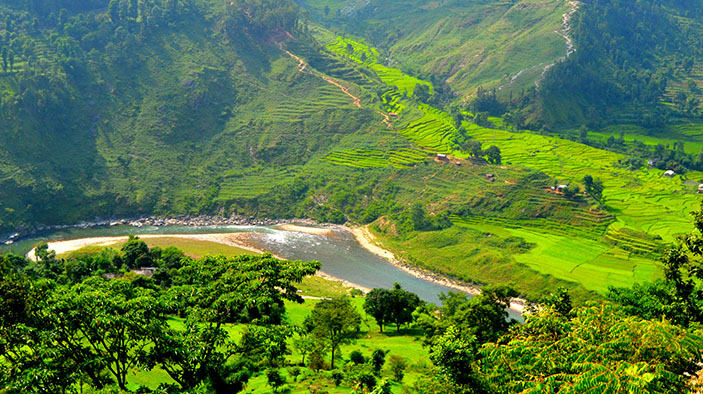
Introduction to Natural Resources in Nepal
Nepal is a land-locked country situated in the Himalayas between India and Tibet. The country is known for its stunning natural beauty, with majestic mountain ranges, pristine forests, and rolling hills. Natural resources are an integral part of the economy and culture of Nepal, providing both livelihoods and recreational opportunities for its citizens. From forests and water to minerals and wildlife, Nepal is blessed with a rich abundance of resources that have the potential to contribute significantly to its development.
Table of Contents
In this essay, we will take a closer look at the natural resources in Nepal, including their types, distribution, and importance. We will also examine the challenges that Nepal faces in managing these resources effectively and the efforts being made to conserve them. This essay aims to provide a comprehensive overview of the natural resources in Nepal and their role in the country’s economy and environment.
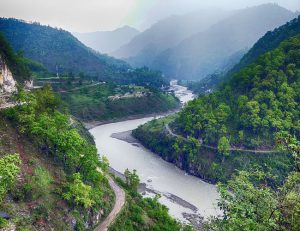
Importance of Natural Resources for Nepal’s Economy
Nepal is a country that is rich in natural resources, including water, forests, minerals, and fertile land. These resources are vital to the economic development of the country and play a crucial role in the lives of millions of people. In this article, we will discuss the importance of natural resources for Nepal’s economy.
Forests and Natural Beauty: Nepal is home to a diverse range of forest types and vegetation, making it a popular tourist destination. The country’s forests provide vital ecosystem services, including watershed protection, carbon sequestration, and habitat for wildlife. In addition, the natural beauty of the forests is a major draw for tourists, generating significant revenue for the country.
Agriculture : Agriculture is the backbone of Nepal’s economy and a significant source of livelihood for millions of people. The country’s fertile land, abundant water resources, and favorable climate conditions make it ideal for agriculture. Agriculture contributes to the country’s GDP, providing food, fiber, and other essential products.
Hydropower: Nepal is known for its abundant water resources and has the potential to generate substantial amounts of hydropower. Hydropower is a clean and renewable source of energy that can contribute to economic growth and reduce dependence on imported fuels. The development of hydropower projects has the potential to create jobs, attract investment, and improve energy security.
Minerals: Nepal is rich in minerals, including iron ore, coal, limestone, and other minerals. The exploitation of these minerals can provide a significant boost to the country’s economy, creating jobs, increasing government revenue, and attracting investment. However, it is important to ensure that mining activities are carried out in an environmentally sustainable manner.
Also Read :- Mahatma Gandhi: Inspiring a Movement for Change
In conclusion, natural resources play a crucial role in Nepal’s economy. The country’s forests, fertile land, water resources, and minerals provide vital ecosystem services and support the livelihoods of millions of people. By leveraging these resources, the country has the potential to achieve sustainable economic growth and improve the quality of life for its citizens.

Types of Natural Resources in Nepal
Water Resources: Nepal is known for its abundant water resources with numerous rivers, lakes and glaciers. Some of the major rivers in Nepal include the Ganges, Indus, and Brahmaputra, which are crucial for agriculture, fishing, and hydropower generation.
Forest Resources: Forests cover about 30% of the total land area of Nepal and provide a wide range of benefits to the country, including fuelwood, timber, medicinal plants, and wildlife habitat.
Mineral Resources: Nepal is rich in minerals such as limestone, iron ore, coal, magnesium, and gold. These resources are essential for the construction, manufacturing, and energy industries.
Agricultural Resources: Nepal is a predominantly agricultural country, with over 80% of its population relying on agriculture for their livelihood. Rice, wheat, maize, and millet are some of the major crops grown in the country.
Wildlife Resources: Nepal is home to a diverse range of wildlife species, including tigers, rhinos, elephants, and monkeys. These resources are crucial for ecotourism, which provides a significant source of income for local communities.
Hydro Power Resources: Nepal has significant potential for hydropower generation, with numerous rivers and streams flowing through the country. This renewable energy source provides a sustainable alternative to fossil fuels and is an important contributor to the country’s economy.
Cultural and Heritage Resources: Nepal is famous for its rich cultural and heritage resources, including monuments, temples, and palaces. These resources are valuable for tourism and play an important role in preserving the country’s cultural identity.
Challenges faced by Nepal in Managing its Natural Resources
Nepal is a landlocked country in South Asia, rich in diverse and abundant natural resources. However, despite having a plethora of natural resources, Nepal faces numerous challenges in managing them effectively. Some of the major challenges faced by Nepal in managing its natural resources are discussed below.
- Limited Awareness: Nepal has a large rural population, where most people are illiterate and lack awareness about the importance of natural resources. This leads to over-exploitation and destruction of natural resources, which affects the country’s overall development.
- Lack of Government Support: The government of Nepal lacks adequate financial and technical resources to effectively manage natural resources. There is also a lack of political will to implement conservation and sustainable management programs, which results in the mismanagement of natural resources.
- Corruption: Corruption is a major challenge in Nepal, and this also extends to the management of natural resources. Lack of transparency in the allocation and management of resources often leads to their exploitation and destruction, leading to an imbalance in the ecosystem.
- Unplanned Development: Unplanned development activities such as deforestation, illegal logging, mining, and other commercial activities often cause severe damage to the environment and natural resources. This results in degradation of the environment, reducing the capacity of natural resources to provide benefits to the local communities.
- Climate Change: Climate change is a major challenge to the management of natural resources in Nepal. Changes in the pattern of rainfall and temperature affect agriculture, forestry, water resources, and other ecosystem services, which impacts the livelihoods of local communities.
- Geographical Challenges: Nepal’s mountainous geography poses a significant challenge to the management of natural resources. The country’s inaccessible terrain makes it difficult for the government to monitor and enforce conservation and sustainable management programs.
In conclusion, Nepal faces numerous challenges in managing its natural resources, but with effective government support, increased awareness, and the implementation of sustainable management programs, these challenges can be overcome. Effective natural resource management is crucial for the country’s overall development and the well-being of its people.
Also Read :- Sundar Pichai : Inspirational Biography, Education, Family and Unexpected Salary of $2M+
Role of Government in Preserving Natural Resources in Nepal
The government of Nepal plays a crucial role in preserving the country’s natural resources, which are essential for the sustainable development and well-being of its people. Natural resources in Nepal include forests, water, minerals, and wildlife, among others. These resources provide numerous benefits, such as providing livelihoods, maintaining ecological balance, and conserving biodiversity.
Forests : Forests cover approximately 37% of Nepal’s land area and are crucial for maintaining the country’s ecological balance. The government has implemented various measures to protect forests and prevent deforestation. For example, the Forest Act of 1993 prohibits the unauthorized felling of trees, and the government has established protected areas, such as national parks and wildlife reserves, to conserve wildlife and forests. Additionally, the government has launched programs to promote sustainable forest management, such as community forestry, where local communities are involved in the management and conservation of forests.
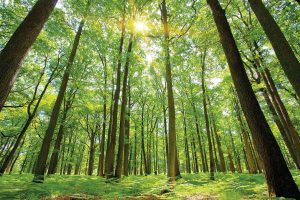
Water: Nepal has abundant water resources, including rivers, lakes, and glaciers, which are essential for agriculture, industry, and drinking water. The government has implemented various measures to conserve and manage water resources, such as the Water Resource Act of 1992 and the National Water Plan of 1992. These laws and policies aim to ensure equitable access to water and prevent water pollution.
Minerals: Nepal has rich deposits of minerals, such as limestone, quartz, and iron ore, which are essential for various industries, including construction, manufacturing, and energy. The government has implemented various measures to manage mineral resources, such as the Mines and Minerals Act of 1992, which regulates the exploration, exploitation, and conservation of minerals. Additionally, the government has established the Department of Mines and Geology to oversee the management of mineral resources and ensure sustainable and responsible mining practices.
Wildlife: Nepal is home to a rich diversity of wildlife, including rare and endangered species, such as the Bengal tiger and the one-horned rhinoceros. The government has established various protected areas, such as national parks and wildlife reserves, to conserve wildlife and prevent illegal hunting and poaching. Additionally, the government has launched programs to conserve wildlife, such as ecotourism, which generates income for local communities and supports conservation efforts.
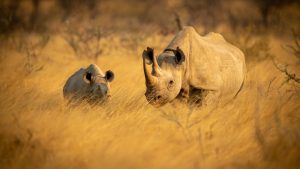
In conclusion, the government of Nepal plays a critical role in preserving the country’s natural resources, which are essential for the sustainable development and well-being of its people. The government has implemented various measures, such as laws and policies, protected areas, and programs to promote sustainable management and conservation of natural resources. The government’s role in preserving natural resources is crucial for ensuring their long-term sustainability and the well-being of future generations.
Also Read :- Xiaomi Unveils MIUI 14 Global Release for 12 Flagship Devices: Experience the New Android 13-based UI
Community-Based Natural Resource Management in Nepal
Community-based Natural Resource Management (CBNRM) is a critical approach to the sustainable management of natural resources in Nepal. This method of resource management is based on the principle of empowering local communities to participate in the management and decision-making process of the natural resources that affect their lives. The aim of CBNRM is to balance the interests of the local communities, governments, and businesses to ensure that the resources are used for the benefit of all stakeholders.

In Nepal, CBNRM has been implemented in various forms to conserve and manage the country’s vast natural resources, including forests, wildlife, water resources, and land. CBNRM is based on the idea of decentralizing the management of natural resources to the local communities. This approach has been successful in conserving and sustaining the resources while promoting the economic development of the communities.
The government of Nepal has been promoting CBNRM as a means of achieving sustainable development. The government has established various laws, policies, and institutions to support the implementation of CBNRM. For example, the Forest Act 1993 and the Community Forest Management Regulation of 1995 provide the legal framework for the management of community forests.
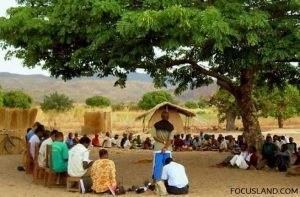
In addition, the government has established the Community-based Natural Resource Management Program (CBNRMP) to provide technical and financial support to communities in their efforts to manage natural resources. The program has been successful in creating a collaborative relationship between the communities, the government, and the private sector to conserve and manage the resources.
The success of CBNRM in Nepal is evident from the increase in the number of community-based organizations (CBOs) that are engaged in the management of natural resources. CBOs have been established in various regions of the country, and they play a critical role in the management of resources, including the protection of forests, wildlife, and water resources.
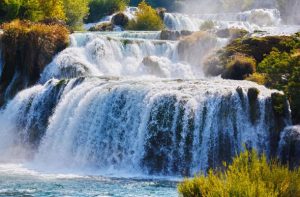
In conclusion, CBNRM is a critical approach to the sustainable management of natural resources in Nepal. The government, local communities, and the private sector must work together to ensure the successful implementation of CBNRM. This will ensure that the resources are used for the benefit of all stakeholders, including the preservation of the environment and the promotion of economic development.
Opportunities for Sustainable Development through Natural Resources in Nepal
Nepal is a country rich in natural resources and has the potential to become a leader in sustainable development. From forests to mineral resources, water resources to wildlife, Nepal has the potential to provide a high quality of life to its citizens while also preserving the environment for future generations.
One of the most significant opportunities for sustainable development in Nepal is the exploitation of its forests. With over 60% of its land area covered by forests, Nepal is one of the most forested countries in the world. These forests provide a vital source of livelihood for millions of people and are also a critical carbon sink. By promoting sustainable forestry practices and utilizing forest products, Nepal can protect its forests while also generating income and creating jobs.
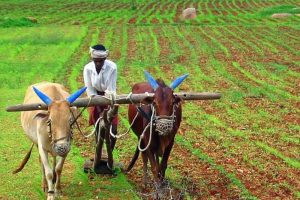
Another opportunity for sustainable development in Nepal is the utilization of its abundant water resources. With numerous rivers and lakes, Nepal has the potential to become a leader in hydroelectric power production. This not only provides a clean and renewable source of energy, but also creates jobs and drives economic growth.
Mineral resources, such as iron, copper, gold and mica, are also abundant in Nepal. The development of these resources can provide a significant boost to the economy and provide employment opportunities. However, it is important to ensure that this development is sustainable and does not harm the environment.
Nepal’s wildlife is also a major opportunity for sustainable development. With a wide range of flora and fauna, Nepal is home to many species that are found nowhere else in the world. By promoting sustainable wildlife tourism, Nepal can protect its unique wildlife while also generating income.
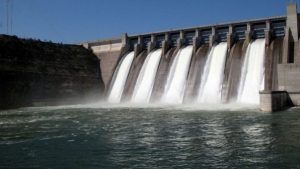
In conclusion, Nepal has numerous opportunities for sustainable development through the use of its natural resources. From forests to water resources to mineral resources, Nepal has the potential to provide a high quality of life for its citizens while also preserving the environment for future generations. By promoting sustainable practices and utilizing these resources wisely, Nepal can become a leader in sustainable development.
Conclusion and Recommendations for Sustainable Use of Natural Resources in Nepal.
In conclusion, Nepal is a country rich in natural resources, including forests, water resources, minerals, and wildlife. The sustainable use of these resources is crucial for the long-term economic and ecological health of the country. However, the current methods of resource extraction and use are unsustainable, and have led to environmental degradation, loss of biodiversity, and increased poverty.
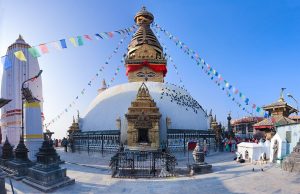
To ensure the sustainable use of natural resources in Nepal, the following recommendations should be implemented:
- Development of sustainable resource management policies: Nepal should establish and enforce policies that promote sustainable resource management practices, including limiting over-extraction, reducing waste, and promoting efficient use.
- Promotion of eco-friendly technologies: Encouraging the use of environmentally friendly technologies and practices can help reduce the impact of resource extraction and use on the environment.
- Community involvement: Engaging local communities in the management and protection of natural resources can help ensure that resources are used sustainably, and that the benefits of resource use are shared fairly.
- Education and awareness: Raising awareness about the importance of sustainable resource use among the general public is crucial to ensure that people understand the impact of their actions on the environment.
- Investment in renewable energy: Investing in renewable energy sources such as solar and wind power can help reduce the dependence on non-renewable resources, while promoting sustainable development.
Also Read :- Class 12 Exam Date 2079/2080 – An Overview for the Students for Navigating the Upcoming Challenge with Confidence
In conclusion, the sustainable use of natural resources is essential for the long-term prosperity and well-being of Nepal and its people. By implementing these recommendations, Nepal can ensure that its rich natural resources are used in a responsible and sustainable manner, for the benefit of present and future generations.
Related Posts
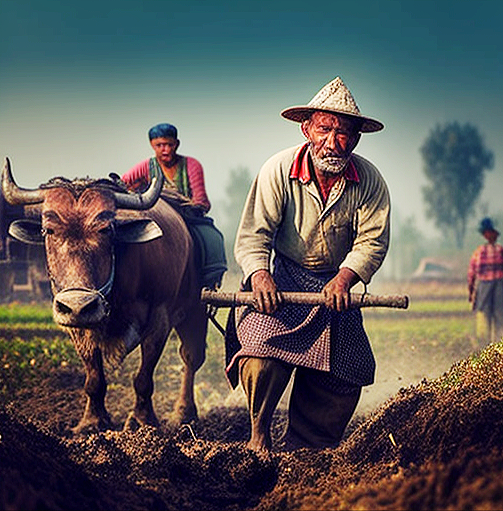
Agriculture in Nepal: An Essay with Comprehensive Analysis
One thought on “ essay on natural resources in nepal: an overview ”.
You’ve been great to me. Thank you!
Leave a Reply Cancel reply
Your email address will not be published. Required fields are marked *
Save my name, email, and website in this browser for the next time I comment.
Home — Essay Samples — Geography & Travel — Tourism — Tourism in Nepal
A Report on Tourism in Nepal
- Categories: Tourism Tourism Industry
About this sample

Words: 448 |
Published: Jan 4, 2019
Words: 448 | Page: 1 | 3 min read
Tourism industry in Nepal (essay)
Works cited:.
- Braddock, J. H. (2017). Race, sports, and education: Improving opportunities and outcomes for black male student-athletes. Routledge.
- Coakley, J. J. (2015). Sports in society: Issues and controversies. McGraw-Hill Education.
- Edwards, H. H. (2015). The role of sport in addressing social inequalities. Journal of Sport and Social Issues, 39(2), 155-169.
- Hylton, K., & Totten, M. (Eds.). (2016). Race, sport and politics: The sporting black diaspora. Routledge.
- Leonard, D. (2016). Race, gender, and sport: The politics of ethnic ‘other’ girls and women. Routledge.
- Messner, M. A., & Sabo, D. F. (Eds.). (2014). Sport, men, and the gender order: Critical feminist perspectives. Human Kinetics.
- Peterson, T., & Richards, J. E. (Eds.). (2018). Global perspectives on race, ethnicity, and racism in sports. Routledge.
- Roper, L. D. (2016). Social justice through sport: A critical sociological perspective. Routledge.
- Sugden, J., & Tomlinson, A. (Eds.). (2018). Power games: A critical sociology of sport. Routledge.
- Wise, T. (2016). Sport and the neoliberal university: Profit, politics, and pedagogy. Routledge.

Cite this Essay
Let us write you an essay from scratch
- 450+ experts on 30 subjects ready to help
- Custom essay delivered in as few as 3 hours
Get high-quality help

Dr Jacklynne
Verified writer
- Expert in: Geography & Travel

+ 120 experts online
By clicking “Check Writers’ Offers”, you agree to our terms of service and privacy policy . We’ll occasionally send you promo and account related email
No need to pay just yet!
Related Essays
2 pages / 1057 words
2 pages / 1003 words
3 pages / 1208 words
5 pages / 2350 words
Remember! This is just a sample.
You can get your custom paper by one of our expert writers.
121 writers online
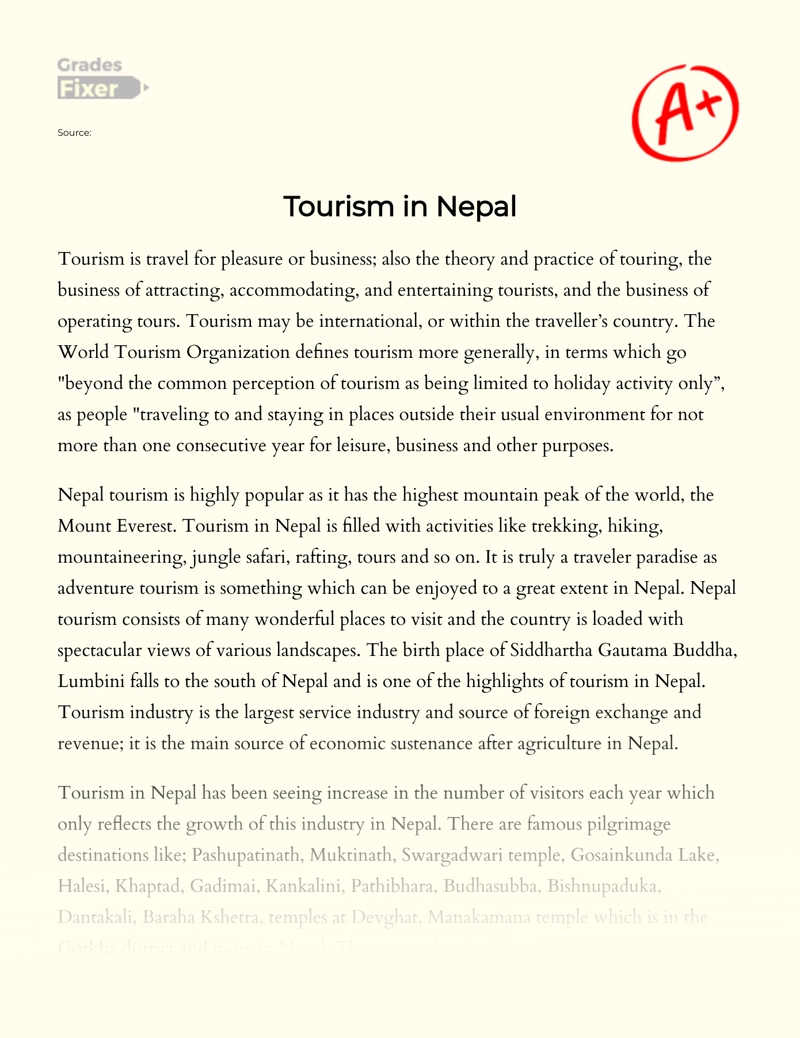
Still can’t find what you need?
Browse our vast selection of original essay samples, each expertly formatted and styled
Related Essays on Tourism
The island of North Cyprus provides an array of historical attractions for travelers interested in learning the history of the country. However, some of the most notable sites include Kourion, which is romantically located on a [...]
The tiny port city of Banjul, is the capital of The Gambia, in West Africa. It’s located in the southern part of the Gambia River estuary on Saint Mary’s Island, cut off from the mainland by a series of creeks lined with [...]
The continent offers an out of this world array of decisions for guests making an attempt to explore — and it’s much more than merely safaris! From endless inhospitable sand dunes, to beating metropolises, to clear mountain [...]
Over the course of over two years, I slacked my research and everything for this course as I believed it to be a nuisance. However, when my third-year internship started, and now as I have finished my Entrepreneurship minor and [...]
Representations of authors’ experiences of particular landscapes hold great significance for their audiences, as they portray the multifaceted relationships between people and landscapes, such as how interactions with landscape [...]
Being a small piece of paradise for those living in New York City, Rockaway Beach, Queens is a lively and tight-knit community on the outskirts of the city noise. Year round, regardless of the temperature outside, the small town [...]
Related Topics
By clicking “Send”, you agree to our Terms of service and Privacy statement . We will occasionally send you account related emails.
Where do you want us to send this sample?
By clicking “Continue”, you agree to our terms of service and privacy policy.
Be careful. This essay is not unique
This essay was donated by a student and is likely to have been used and submitted before
Download this Sample
Free samples may contain mistakes and not unique parts
Sorry, we could not paraphrase this essay. Our professional writers can rewrite it and get you a unique paper.
Please check your inbox.
We can write you a custom essay that will follow your exact instructions and meet the deadlines. Let's fix your grades together!
Get Your Personalized Essay in 3 Hours or Less!
We use cookies to personalyze your web-site experience. By continuing we’ll assume you board with our cookie policy .
- Instructions Followed To The Letter
- Deadlines Met At Every Stage
- Unique And Plagiarism Free
500 Words Essay On Federalism in Nepal

How To Earn Money Online in Nepal For Students? Learn More: Click Here→
Federalism in Nepal
Federalism in Nepal refers to the system of government in which power is divided between a central authority and constituent political units. After a decade-long civil war and the overthrow of the monarchy, Nepal officially adopted federalism as a part of its new Constitution in 2015. The country has been divided into seven provinces, each with their own elected government and legislative assembly.
(NEW) Essay On Federalism in Nepal : Click Here
The adoption of federalism in Nepal was a response to the long-standing demands of marginalized and minority groups for more autonomy and representation. These groups, particularly those in the Terai region and ethnic minority groups, felt that the central government in Kathmandu had neglected their needs and interests. Federalism was seen as a way to address these grievances and bring about greater inclusivity and equity in the political system.
Despite these challenges, many argue that federalism in Nepal has the potential to bring about significant positive changes in the country. By decentralizing power and allowing for greater participation in decision-making at the local level, federalism can lead to more responsive and accountable government. Moreover, by recognizing and addressing the diverse needs and interests of different regions and groups, federalism can help to promote social and economic development and reduce poverty and inequality.
500+ Words Essay On Tourism in Nepal Learn More: Click Here→
Another key aspect of federalism in Nepal is the issue of resource allocation and distribution. The Constitution of Nepal recognises the need for the central government to ensure that the provinces have enough resources to effectively govern and deliver services. However, there is still ongoing debate about how to ensure that resources are distributed equitably between provinces and how to ensure that provinces with less resources and opportunities are not left behind.
Overall, federalism in Nepal is still a relatively new system of government and its implementation is ongoing process. There are many challenges to overcome, but many believe that federalism has the potential to bring about positive changes in terms of representation, accountability and development in the country. However, It will need time to see how effective it is in delivering its promises.
500+ Words Essay On Importance of Tourism in Nepal Learn More: Click Here→

Essay On Womens Empowerment
Essay On Tourism in Nepal
Essay On Effects of climate change
Essay On Impact of social media
Essay On Use and misuse of internet
Role of Youths in Nation Building
Political and Economic Challenges
300 Words Essay On Covid 19
How to start earning online in nepal as a student.
We've listed some of the best ways to make money online in Nepal for students. We hope you'll find this article informative and helpful. We recomment you to visit this article to understand how you can earn money online as a student. EARN MONEY ONLINE Click Here

- _Grade VIII
- _ _Social Studies
- _ _(Grade XI- New Course)
- _ _ _Language Development
- _ _ _Literary Studies
- _ _ _ _Short Stories
- _ _ _ _Poems
- _ _(Grade XII- New Course)
- _Basic Level
- Moral Stories
- General Knowledge
- Information
Thursday, February 1, 2018

Importance of Agriculture in Nepal (Essay)

50 comments:

I recently found many useful information in your website especially this blog page. Among the lots of comments on your articles. Thanks for sharing. Sindh Irrigated Agriculture Progress
I will really appreciate the writer's choice for choosing this excellent article appropriate to my matter.Here is deep description about the article matter which helped me more. write my essay for me
A professional writer reads your writing and will completely fix all the grammatical errors, misspellings, and incorrect word choices. Some try correcting the proofs of service and will go a step further and publish the organization, clarity, and structure. If you consider sending each school paper that you write, to an essay editing service, before you were filming it, you might want to make sure that your editor understands your needs. Most teachers can develop a good idea of your tone and point of view during the semester. A professional editor will test your writing academic and conditions of publishing. essay writing service
Custom essay writing services are rampant on the web these days. Every time I turn around, it seems like there is a new website selling essays to unsuspecting college students around the world. essay writer service
A granja de galinhas deve ser um local iluminado e ventilado. Mas, ao mesmo tempo, deve proteger as galinhas da chuva, do sol excessivo no verão e do possível ataque de predadores. granja de galinhas
Agrarian science and agriculture, albeit identified with one another, are basically totally different from each other. Online Basmati Rice
Hello, I have browsed most of your posts. This post is probably where I got the most useful information for my research. Thanks for posting, maybe we can see more on this. Are you aware of any other websites on this subject. tutlance
The term agricultural marketing is comprised of two different words namely, agriculture and marketing. 'Agriculture', of course refers to the activities making use of natural resources for the welfare of society whereas 'Marketing' means looking after the marketing functions, channels and agencies etc. agronomie
The outcome has been two books and a DVD that have helped children accomplish a portion of the potential that sits inside us all. how to start a blog
Deutz Fahr Parts Catalog involves growing of crops such as fruits and vegetables and rearing of livestock to produce food for public consumption. Without agriculture our existence as humans and livestock would be threatened. Whether one is practicing agriculture in a small farm or in a large farm, agriculture provides many benefits to the society.
All these points will give you an outline to your essay writing. Do not stick to one point. This makes the reader disinterested in your writing. essay writing service
I found Hubwit as a transparent s ite, a social hub which is a conglomerate of Buyers and Sellers who are ready to offer online digital consultancy at decent cost. https://owlessay.net/write-my-paper/
Sustainable agriculture is often thought of in terms of environmental issues, but in this article, I define it more broadly, so as to encompass economic and human factors as well. I argue that the single most important factor in achieving truly sustainable agriculture is the leaving intact of ecosystems. I set the target goal of preserving 70% of all land as wild ecosystems. These intact wild ecosystems could provide immense economic benefits both for agriculture and for society as a whole, both in terms of direct and indirect effects. Mandi Bhav Today
Have your ideas first in your mind without putting them down on the paper. When you feel like writing them down, take notes on every idea, word and phrase that involves your mind and relates to the main topics your essay. http://www.northwesteliteindex.com/the-many-ways-to-find-cheap-essay-writers.html
Love to read it,Waiting For More new Update and I Already Read your Recent Post its Great Thanks. essay typer real?
I found so many interesting stuff in your blog especially its discussion. From the tons of comments on your articles, I guess I am not the only one having all the enjoyment here! keep up the good work... using an essay writing service
All the schools affiliated to the CBSE board are bound the exam system and need to teach the NCERT syllabus as per the guidelines specified by the board. Raipur Board 12th Model Paper 2021
Wow, What a Excellent post. I really found this to much informatics. It is what i was searching for.I would like to suggest you that please keep sharing such type of info.Thanks https://ejemplosmaterialesconstruccion.blogspot.com/
Where do essay writing services get their essays? Although many of these companies would like you to believe that they are creating essays with a qualified team of writers, most of these so-called essay writing services actually outsource their writing to India and other countries. dissertation help
Wow, cool post. I’d like to write like this too – taking time and real hard work to make a great article… but I put things off too much and never seem to get started. Thanks though. Descriptive Essay Writing Service
A fruitful decision of composing method ensures your accomplishment in getting A for exertion for your essay. check out the post right here
Last month, when i visited your blog i got an error on the mysql server of yours.*~,”* https://artdaily.com/news/131118/The-Algorithm-of-How-to-Buy-Essay-Online-Cheap#.X9x8q9gzZPb
To realize how to compose an essay above all else you ought to distinguish the sort of essay you are going to compose. At the point when we talk about the essay types, as a rule we manage the accompanying: "For and Against" Essays, Opinion Essays, Providing Solutions to Problems and Letters to the Editor. research paper writing rules
LIC Customer login as a new user, login to LIC India service portal to pay premium online and to manage all your insurance policies, activate new helpline services, check your loan and interest details in LIC login, check the premium subscriptions with calculator, subscribe for online term insurance available on registration at e Services portal. LIC india login All the premier services are available for LIC policy customer with one registered login at Life Insurance Corporation customer portal account, if your are agent or customer, you can access the LIC policy number services separately with Agent login and LIC customer login with new and old portal login.
is easy to value, and has a clear and evident track record to analyse, and as such agriculture investment ticks all of the relevant boxes to potentially become the ideal asset class for investors today. Europa-Road kombájn szállítás
At the point when you are writing for posts, attempt and give your perusers significant quality data. Recollect this is your crowd. These are individuals you are attempting to build up a compatibility with. Assignment Help
The main thrust behind the Hatch Act was the need of the country to enable the ranchers so they could improve efficiency and feed the developing populace. Since the mid nineteen sixties, agriculture has acquired a ton of significance in creating and created nations. targonca szállítás Europa-Road Kft.
A research paper help service is basically an academic paper writing help company or agency that helps students write academic papers. Such companies provide reference material. Several research writing services have come into existence over the past few decades. But students trust us the most, because of our unique quality timely delivery and rapid change.

Agriculture is one of the best and important department of any country and if you make your country prosperous, you should make this department strong and powerful. Assignment writing services .
It is imperative that we read blog post very carefully. I am already done it and find that this post is really amazing. buy assignment 2021
There are different types of such software available in the market so you can choose any one of them according to your requirements and need. Best Essay Writing Services UK
The individual touch that she provides for the new shades does much for Essie's ubiquity. Persistent course of observing new shades has kept Essie nail clean in the front line of the multitude of other comparative organizations. PhD Thesis Writing Services UK
Say It With Flowers Many people love flowers - to varying degrees at least - whether or not only as something special to some loved one. But there is however more to flowers than just a pretty gift. Many flowers are edible by humans and/or animals, or infused as a health drink. SPRING FLOWER GARDENING TIPS
These calculations are for reference purposes only. All figures are estimates only through tree value calculator and are not guaranteed as accurate. Always consult a professional financial

There are many different reasons why people should start growing garden vegetables - no matter how small. Let's examine some of these reasons so we'd know what to expect from this hobby.

थिद इस फुच्किंग कन्टट

The Assignment Helpline appreciates your blog; keep it up.We really enjoy reading your blog.This blog contains the aforementioned information on e-learning. financial management assignment
Agriculture is the main source of occupation and significant contributor in Indian economy in which rice and wheat are the major food grains of the world. Trade best quality rice variety in African and Gulf Country.
Writehw helps in the creation of the following: Website: https://writehw.com/ Phone: +1(857)399-2684 [email protected] -Brochures -Flyers -Business Cards -Infographics -Digital Posters -Logos -Invitation Cards
This blog is very nice as per our reading experience. you have deliver very good informative blogs and giving us good info. Perico Ripico Tours: Embark on an unforgettable adventure with breathtaking landscapes, expert guides, and unmatched hospitality. Immerse yourself in nature's wonders and create lifelong memories. A journey like no other! Best travel guide to Punta Cana
Wonderful articles, Your blog has offered with helpful data for working with. Every suggestion in the article is excellent. erp customization
Discover the the best websites for education that can help you with research statisticshelper
NMIMS solved assignment Buy NMIMS solved assignment Sep 2023. Get 100% plagiarism free NMIMS solved assignments sep 2023 with high quality content from us at cheap price Nmims Solved Assignment
If you have specific questions or inquiries about "suryaxetri" or the context it refers to, you can try reaching out to them directly through their website or contact information if available. Please note that the availability of reviews and information can vary widely depending on the specific aspect or context of "suryaxetri" you are interested in. When exploring websites, services, or individuals, it's essential to gather information from multiple sources and consider the relevance and credibility of the information you find. south jersey flsa lawyer
Visit their official website or social media profiles to find user reviews, testimonials, and information about their products, services, or offerings. If you have specific questions or need more information, contact them directly through their contact information. E-commerce platforms like Amazon and eBay can often provide customer reviews and ratings for their products. Check for online communities, forums, or social media groups related to the specific product or service you associate with "suryaxetri." Remember to specify the specific aspect or product you are looking for, as "suryaxetri" may encompass various offerings or topics. abogado de accidentes
You have provided a detailed account of agriculture in Nepal in this article. This article is very informative and useful for farmers. Thank you. NMIMS solved Assignment
A small business with four employees can use a dinstar fxs voip gateway to connect its analog phones to a VoIP PBX system.
Agriculture is a vital aspect of Nepal's economy and livelihoods, contributing significantly to the country's GDP and providing livelihoods, food security, and rural development. The majority of the population engages in farming activities, making agriculture a primary source of income for rural households. The sector encompasses a diverse range of crops, livestock, and agro-based industries, contributing to both domestic consumption and export earnings. Nepal's agrarian landscape offers employment opportunities for farmers, laborers, and agribusiness entrepreneurs, absorbing a large workforce, particularly in rural areas where alternative job opportunities are limited. Agriculture is the backbone of Nepal's food security, with the cultivation of various crops such as rice, wheat, maize, pulses, and vegetables ensuring a diverse and nutritious diet for the population. Promoting sustainable farming practices and technological advancements can enhance food production capabilities and mitigate risks associated with food shortages and price volatility. Investments in agricultural infrastructure, such as irrigation systems, roads, and storage facilities, improve farming efficiency and contribute to overall rural development. A thriving agricultural sector is essential for uplifting the standard of living in rural areas, as the majority of Nepal's population resides in these communities. Nepal's unique topography and climate make it vulnerable to environmental challenges, but sustainable agricultural practices are crucial for preserving natural resources, preventing soil erosion, and maintaining biodiversity. Encouraging eco-friendly farming techniques and promoting agroforestry can contribute to environmental conservation and resilience against climate change impacts. In conclusion, agriculture is not just a sector of the economy in Nepal; it is a way of life that sustains millions of people. Recognizing its importance and implementing policies that promote sustainable development is essential for the nation's prosperity, well-being, and preservation of its natural heritage. abogados divorcio arlington va
Agriculture is a vital component of Nepal's economy, providing livelihoods for the majority of the population and contributing a significant percentage of the country's GDP. It is also a primary source of employment, particularly in rural areas where farming activities are prevalent. Agriculture is crucial for food security, as the majority of the population relies on locally produced crops for sustenance. Rural development is directly linked to agriculture, with improved practices, infrastructure, and technology contributing to overall rural upliftment. Agricultural products like tea, rice, spices, and medicinal herbs contribute to Nepal's export earnings, providing an avenue for economic growth. Agriculture is deeply embedded in Nepal's culture and traditions, with many festivals and rituals linked to agricultural practices reflecting the agrarian way of life. Traditional agricultural practices contribute to biodiversity conservation by maintaining a variety of crops and livestock adapted to different regions. Agriculture is a source of income for many households, with improved practices, access to markets, and value addition to agricultural products increasing farmers' income. Sustainable agriculture is essential for the long-term well-being of the country, ensuring the conservation of natural resources, promoting resilience to climate change, and protecting the environment. abogado de accidentes de dui

Are you searching for online assignment help? if yes then connect Global assignment help and take 24/7 experts assistance for complete your assessment task . Assignmenttask.com is one stop solution for students. Place an order today.
Email Subscription
Enter your email address:
Delivered by FeedBurner
Subscribe Our Youtube Channel
Total pageviews.
- Privacy Policy
- Terms and conditions
Popular Posts

Copyright (c) 2021 Surya Xetri
- Terms & Condition
- Privacy policy

- _Multi Dropdown
- __Dropdown 1
- __Dropdown 2
- __Dropdown 3
- ApplicationLetter

मेरो देश नेपाल बारे निबन्ध | Essay on my country nepal in nepali
मेरो देश नेपाल बारे निबन्ध | essay on my country nepal in nepali , मेरो देश नेपाल बारे निबन्ध (१५० शब्दहरु ) mero desh essay in nepali language, मेरो देश को बारेमा निबन्ध 200 शब्दमा essay on my country in nepali in 200, मेरो देश नेपाल बारे निबन्ध (२५० शब्दहरु ) mero desh nepal essay in nepali, मेरो देश को बारेमा निबन्ध 300 शब्दमा essay on my country in nepali in 300, मेरो देश नेपाल बारे निबन्ध ( ५०० शब्दहरु) essay on my country nepal in nepali in 500 words, recommended posts, post a comment.
Thanks for visit our site, please do not comment any spam link in comment box.
एक टिप्पणी भेजें
Contact form.

COMMENTS
Essay on My Country Nepal | 700+ Words. Essay on My Country Nepal | Paragraph Writing 600+ Words. My country is the land of diversity and is very unique. My country Nepal lies in the Southern part of Asia. It is surrounded by two powerful countries India and China and is landlocked. It has an area of about 147,516 sq. kilometers.
Students are often asked to write an essay on Nepal in their schools and colleges. And if you're also looking for the same, we have created 100-word, 250-word, and 500-word essays on the topic. ... 500 Words Essay on Nepal Introduction to Nepal. Nepal is a small, beautiful country in South Asia. It is landlocked, which means it does not touch ...
Feel free to visit this website where you can get a custom essay and someone will write your essay about Nepal from scratch. CustomWritingPro is a good solution for students who need help writing essays online. Searched Terms. Essay on Nepal, Short Essay on Nepal, Long Essay on Nepal, Paragram and Essay on Nepal, Essay+on+Nepal, Nepal+essay ...
Essay on My Country Nepal For Students. If there is a country's flag that stands out among all other countries it is the flag of Nepal. Our flag is very unique and cannot be compared to other countries' flags due to its shape. It also has a hidden meaning behind it which represents the country's peace-loving and friendly nature, bravery ...
Nepal is named for the Kathmandu Valley, where the nation's founder established a capital in the late eighteenth century. Nepali culture represents a fusion of Indo-Aryan and Tibeto-Mongolian influences, the result of a long history of migration, conquest, and trade. Location and Geography. Nepal is a roughly rectangular country with an area of ...
2. Brief Essay on Nepal. Nepal is a small landlocked country located in South Asia, bordered by China and India. With a population of around 29 million, Nepal is known for its diverse culture and geography, which ranges from the Himalayan mountain range in the north to the tropical Terai region in the south.. Nepal is home to eight of the world's ten highest peaks, including Mount Everest ...
Writing an essay about My Country Nepal to help students. How to write an essay on My Country Nepal. मेरो देश नेपालको बारेमा एक निबन्ध ...
Nepal is a landlocked country with highly diverse and rich geography, culture, and religions. It is situated in South Asia on the lap of the huge Himalayas surrounded by India in the east, south, and west and China in the north. It occupies an area of 147,516 sq. km. with an average of 193km wide from North to South and an average length (East ...
Students are often asked to write an essay on Culture Of Nepal in their schools and colleges. And if you're also looking for the same, we have created 100-word, 250-word, and 500-word essays on the topic. Let's take a look… 100 Words Essay on Culture Of Nepal Introduction
Nepal became a federal democratic republic in 2008 after a long struggle. The monarchy ended, and people gained more rights. Despite challenges, Nepal is growing and preserving its rich history and culture. 250 Words Essay on History Of Nepal Early Beginnings. Nepal's history is very old and rich. Long ago, small kingdoms were all over the land.
An easy way of writing an essay on my country Nepal for students. You can learn How to write an essay on my country Nepal. Essay writing in English to help o...
Students are often asked to write an essay on Nepali Culture in their schools and colleges. And if you're also looking for the same, we have created 100-word, 250-word, and 500-word essays on the topic. ... This culture comes from the people of Nepal, a country in South Asia. It is known for its mountains, like Mount Everest, and its history ...
To write an essay about Nepal, you should start by researching the country's history, culture, geography, and current events. Additionally, you should consider the perspectives of different people living in Nepal, such as the indigenous population, immigrants, and refugees. Finally, you should draw on your own experiences and observations to ...
It is one of the largest wonders of the world and the region around this is a wonderful place. Mt.Everest is the highest mountain peak on the earth, which lies in the world's highest Mountain Range, The Himalayas. The height of Mt.Everest is 8848m or 29028.87 ft. In early time, Mt.Everest was referred to as Peak XV and after the British.
Nepal's unique culture and people, combined with its rich and diverse history, have made it a popular destination for travelers and an important part of the world's cultural heritage. In this essay, I will explore Nepal's history, its people, and the country's many natural and cultural attractions.
Essay about My Country Nepal | 200,300,400 words. Nepal is a country located in South Asia, between India and China. It is a landlocked country with an area of 147,181 square kilometers, and it is the world's 43rd largest country by area. Nepal is known for its diverse geography, which includes the Himalayas, the highest mountain range in the ...
Our culture our pride. When I was in middle- School, our teacher used to ask us to write an essay on topics like the national animal, the national bird, the national festival and the culture of various athnic groups. In our Nepali text books, we read poems of Laxmi Prasad Devkota, and I vividly remember one of his essay that described Nepal, it ...
The festival is celebrated for five days. Hence, it is known as Panchak. The festival begins in Triyodashi of Karthik Krishna Paksha, a day is known as Kag Tihar, and ends in Dutiya of Kartik Sukla Paksha, a day is known as Bhai Tika. The first day is called the Kag Tihar. On this day, Crow or Kag is worshipped as the message carrier.
Essay on my country Nepal in more than 300 words. My country Nepal is small and beautiful. My country Nepal is surrounded by two giant countries: India and China. In the middle of two big countries lies my small and beautiful country Nepal . The area of my country is just 1,47,181 square kilometres but there lives 125 castes of people and they ...
Nepal is a country that is rich in natural resources, including water, forests, minerals, and fertile land. These resources are vital to the economic development of the country and play a crucial role in the lives of millions of people. In this article, we will discuss the importance of natural resources for Nepal's economy.
Tourism is a traditional activity of the human being that is related with the traveling and it is naturally a human character. People desire change and travel provides the pleasure and leisure. Tourism is the movement of people from one place to another for the purpose of getting satisfaction. The most important assets of a country are cultural ...
Tourism industry in Nepal (essay) Tourism is travel for pleasure or business; also the theory and practice of touring, the business of attracting,... read full [Essay Sample] for free. ... Let us write you an essay from scratch. 450+ experts on 30 subjects ready to help; Custom essay delivered in as few as 3 hours; Write my essay. Get high ...
Tourism in Nepal also plays an important role in the local economy. The industry generates jobs and income for many people, particularly in rural areas. It also helps to promote economic development and improve infrastructure. Additionally, it helps to preserve the country's cultural and natural heritage by encouraging conservation efforts and ...
500 Words Essay On Federalism in Nepal | Federalism in Nepal refers to the system of government in which power is divided between a central authority and constituent political units. After a decade-long civil war and the overthrow of the monarchy, Nepal officially adopted federalism as a part of its new Constitution in 2015.
Nepal is an agriculture country. About 66 percent Nepalese people are involved in agriculture as their occupation. The agriculture has contributed about 36% in the gross domestic product. It has an important role in the economic development of the country. It is the main source of foodstuffs.
Essay 2 मेरो देश को बारेमा निबन्ध 200 शब्दमा Essay on my country in nepali in 200 म नेपाली हुँ । मेरो देश नेपाल हो । मलाई मेरो देश नेपालको धेरै माया लाग्छ । मेरो देश नेपाल एशिया ...